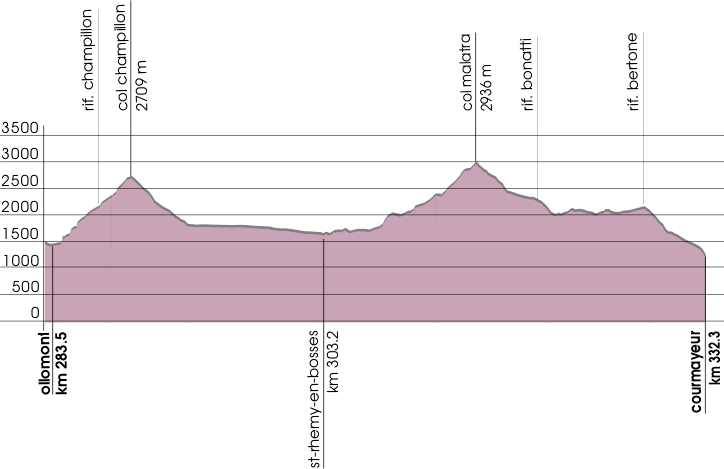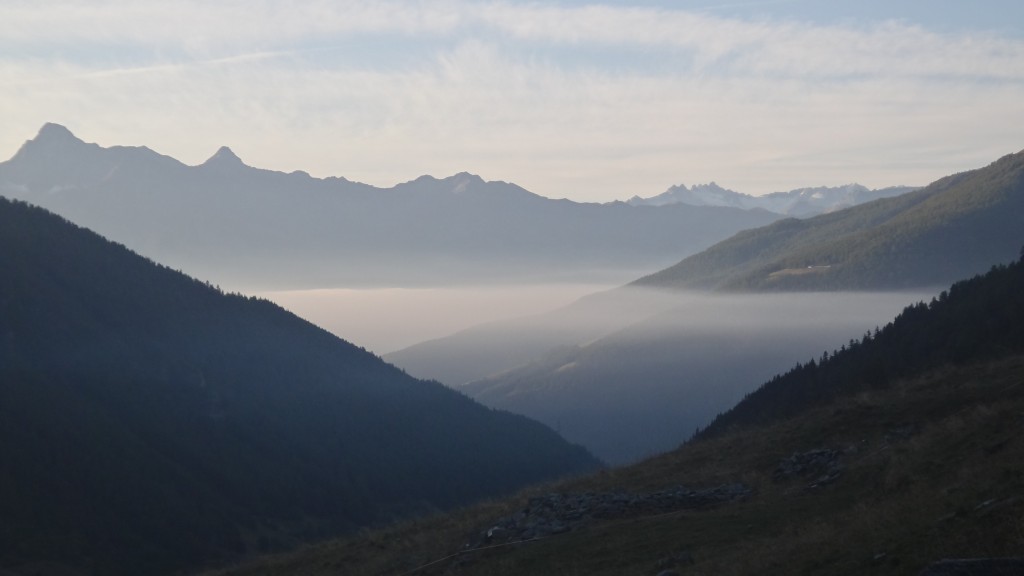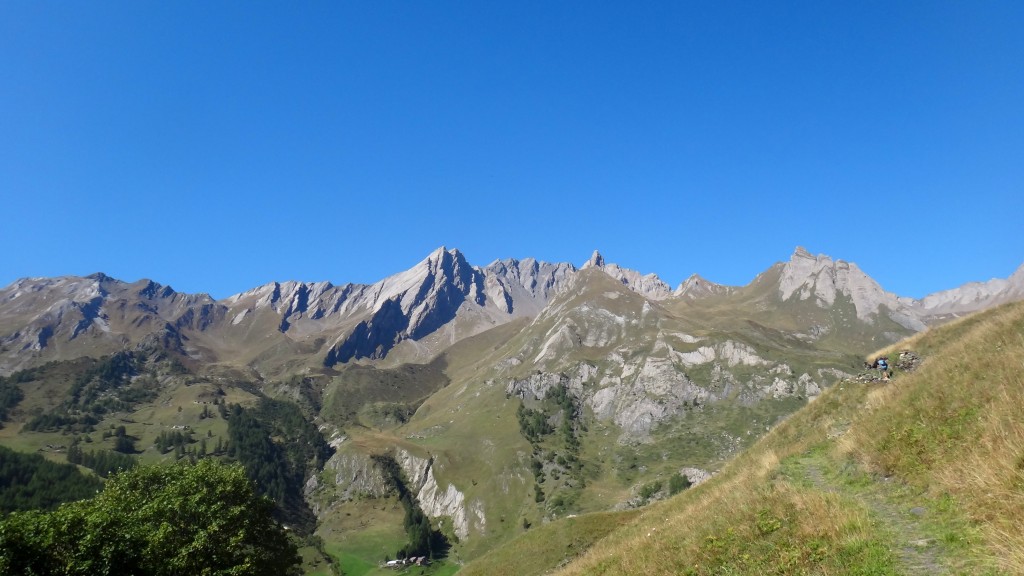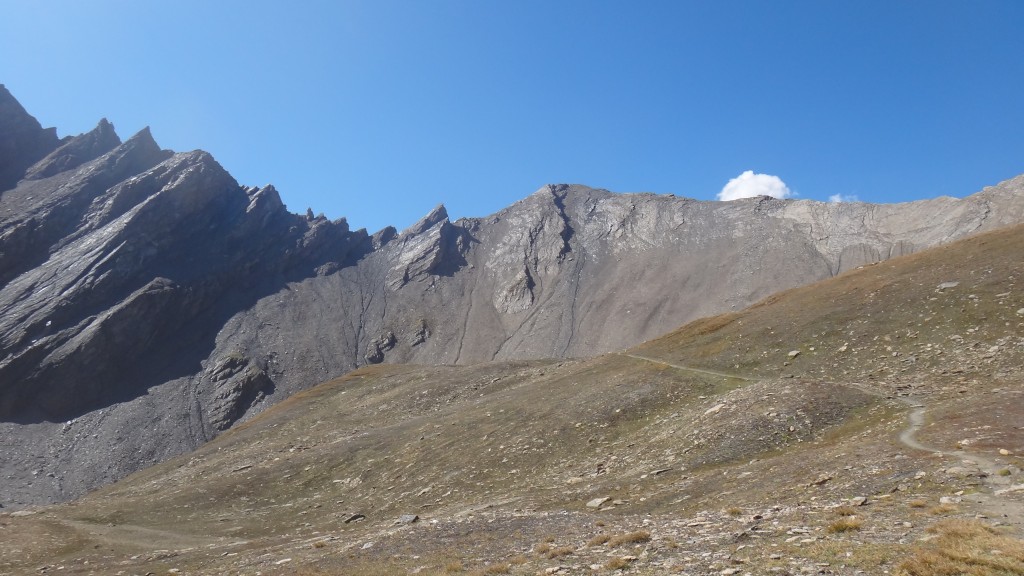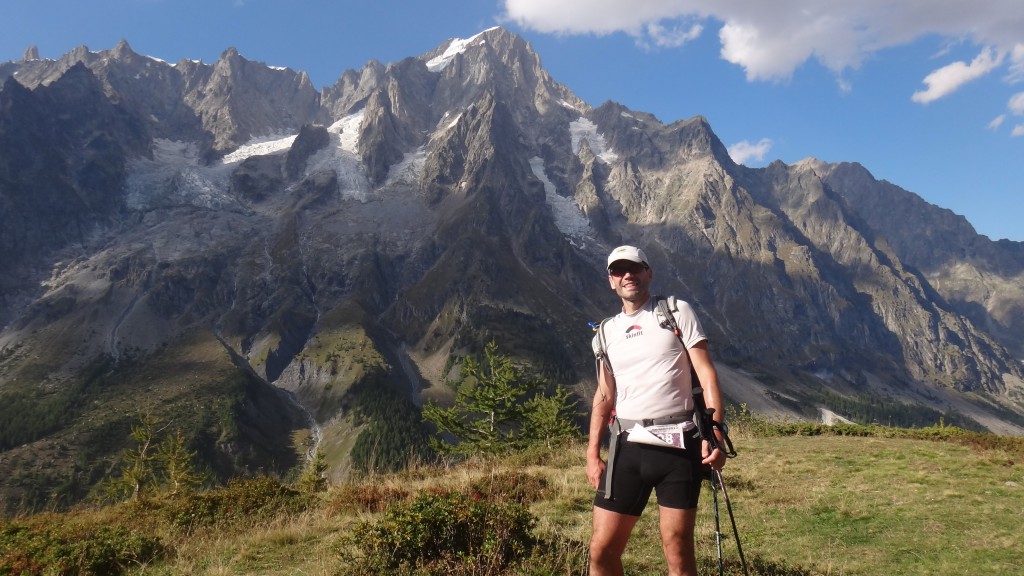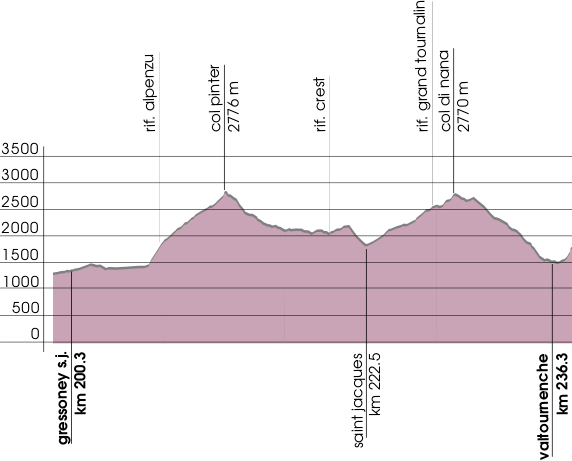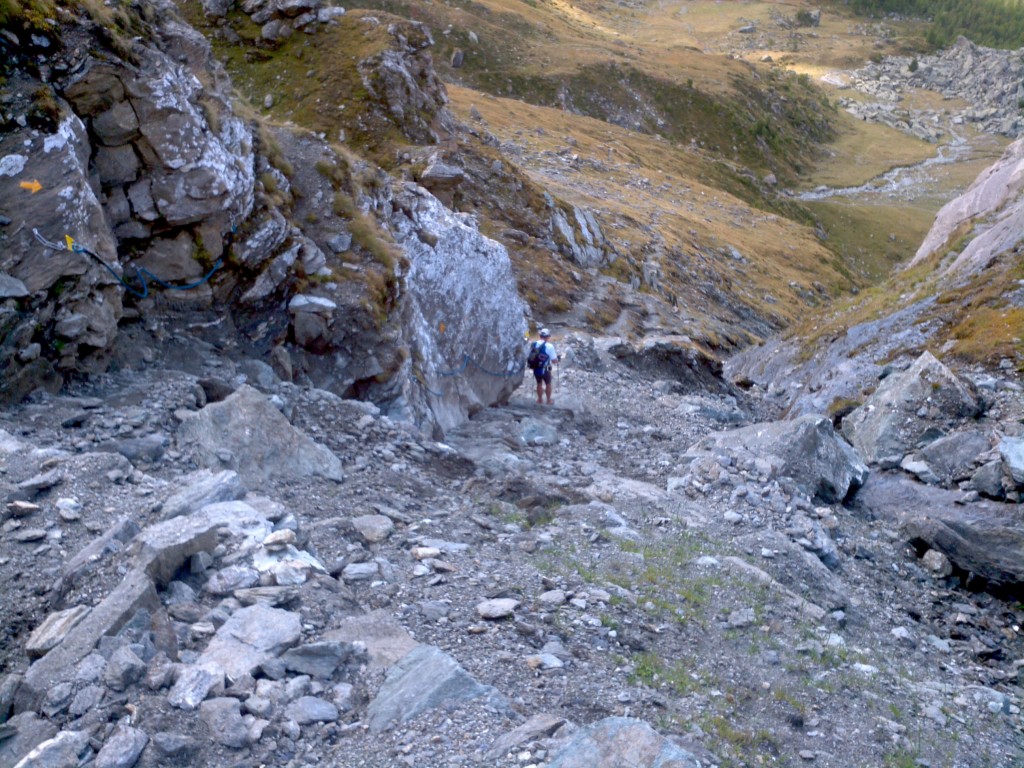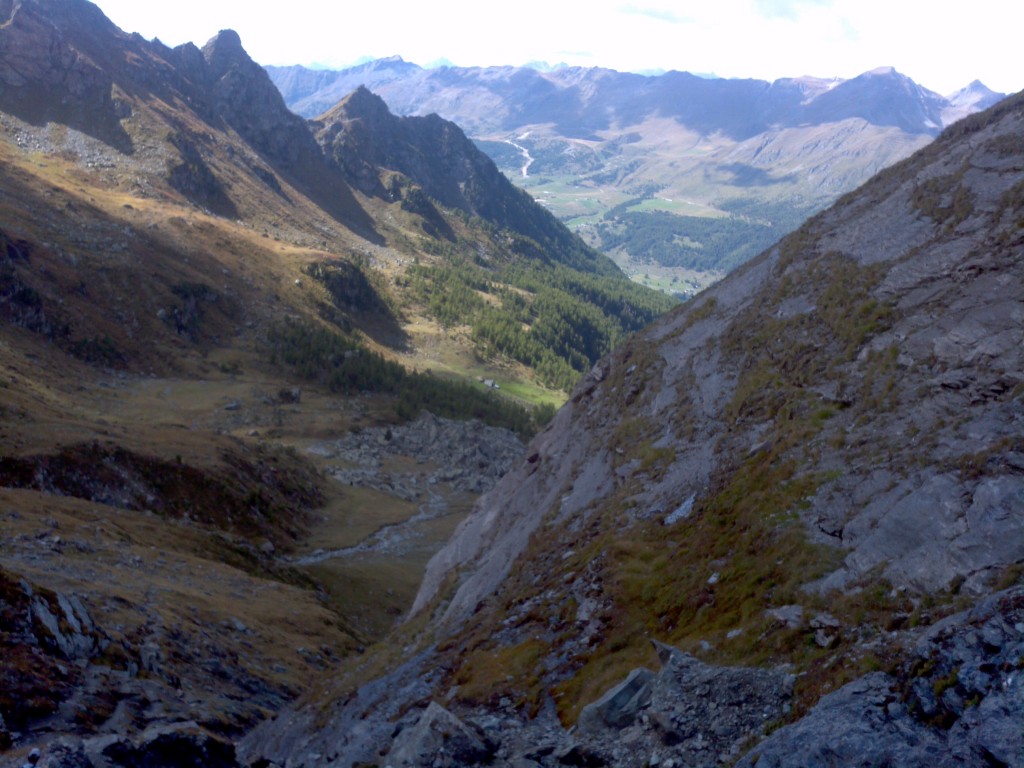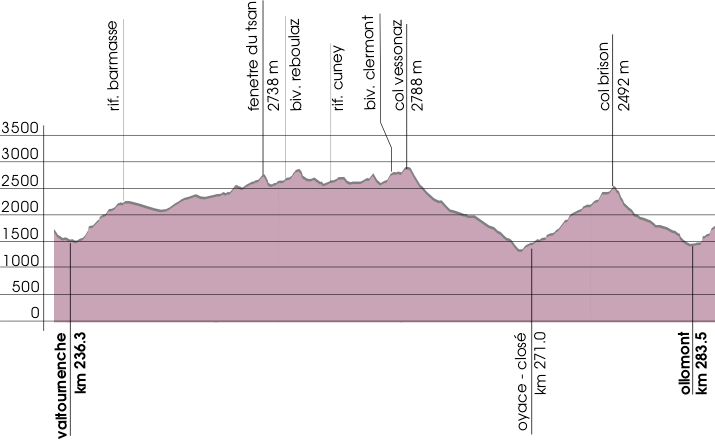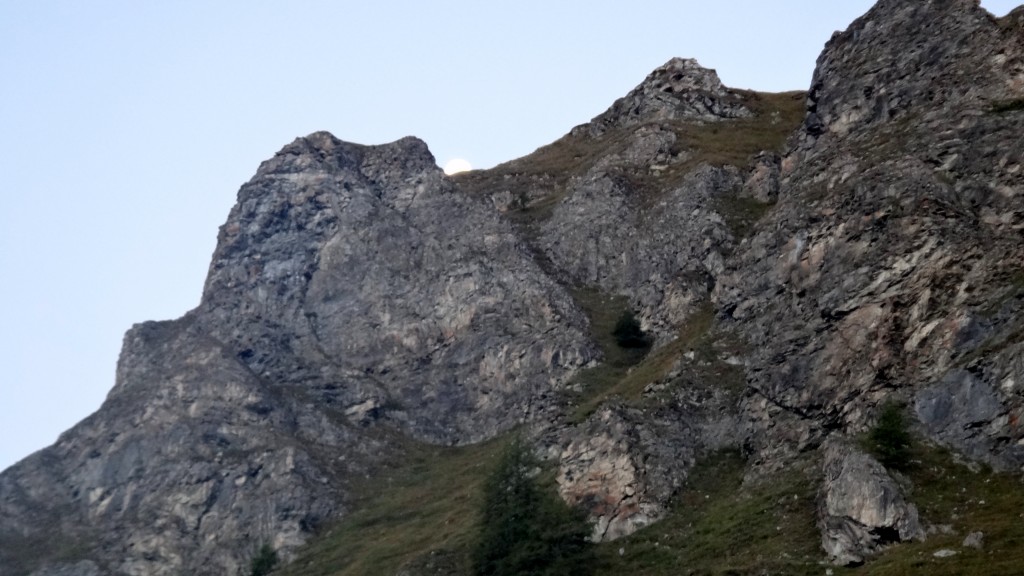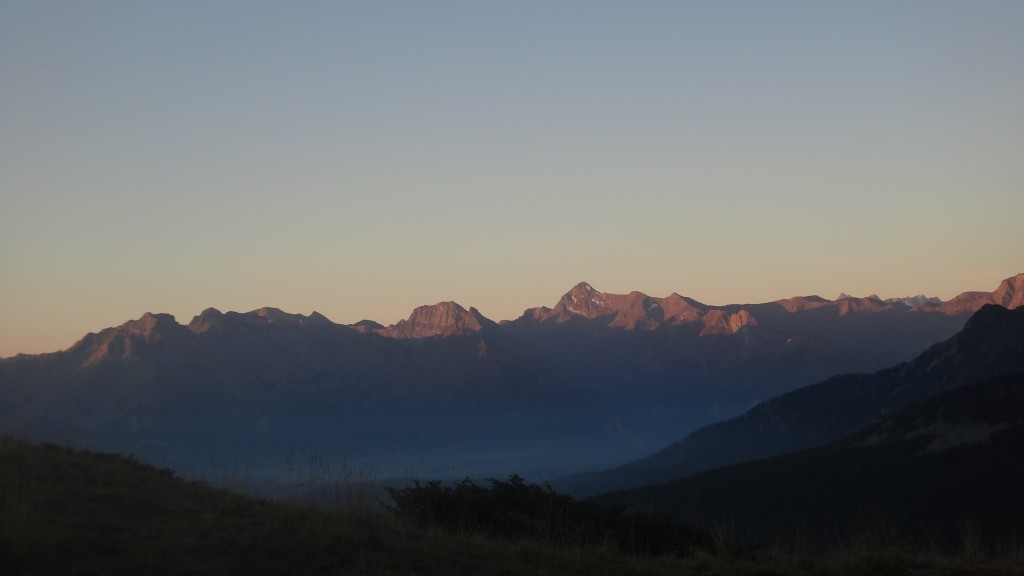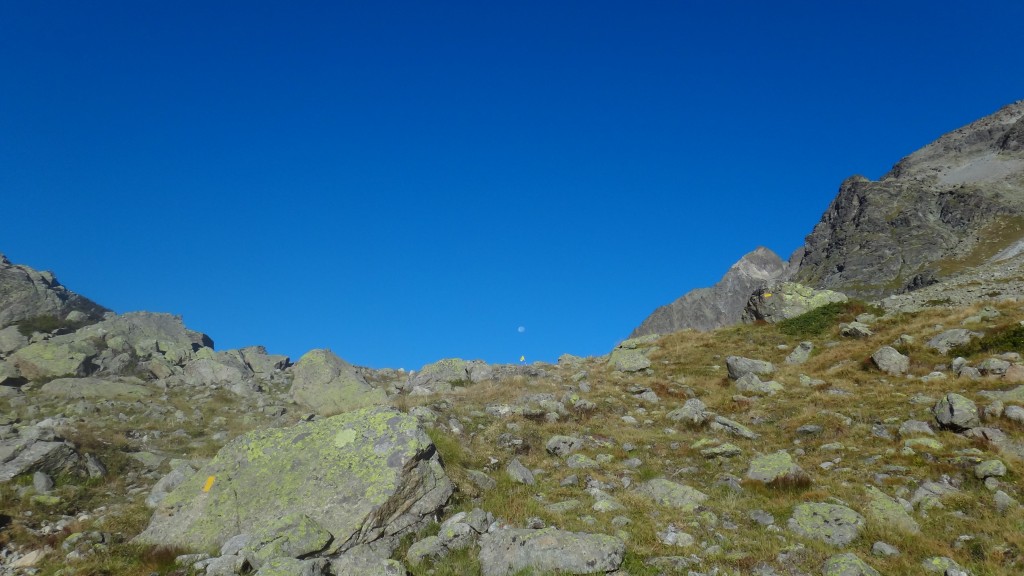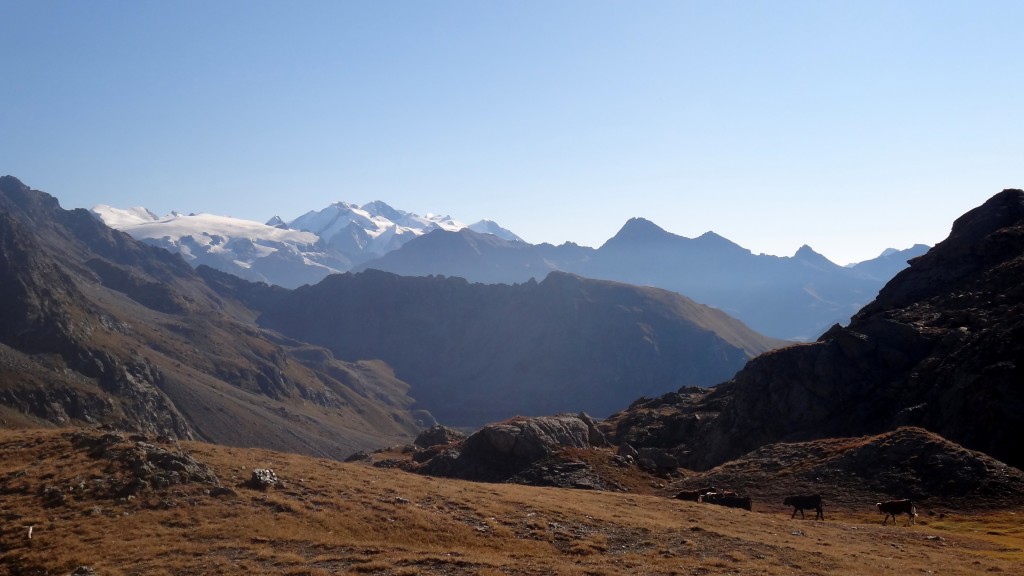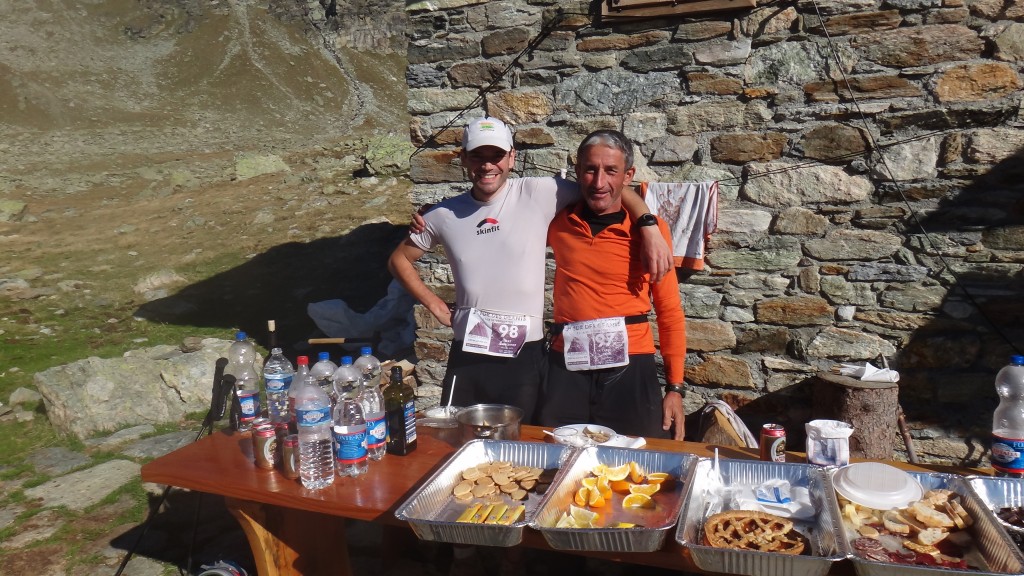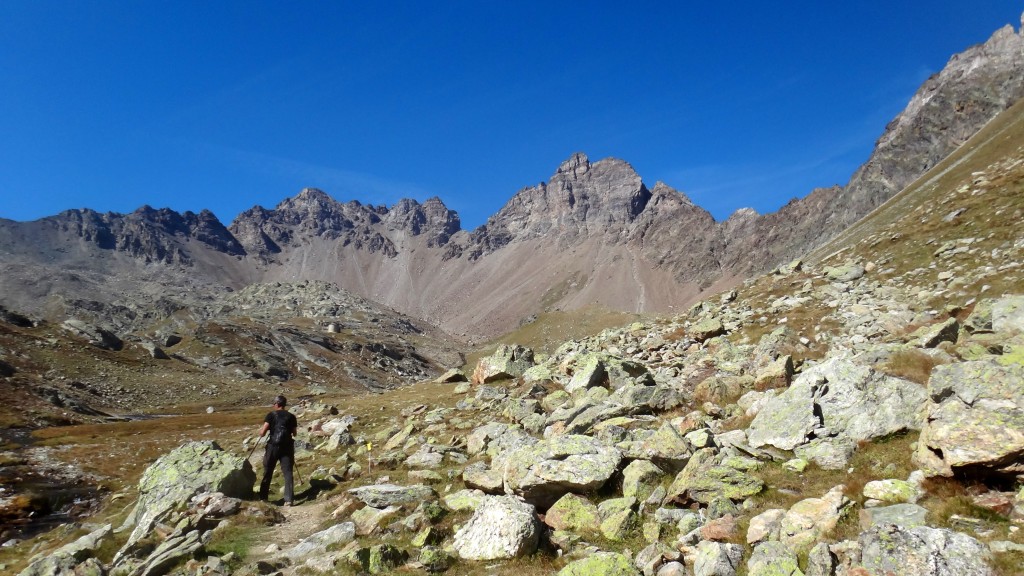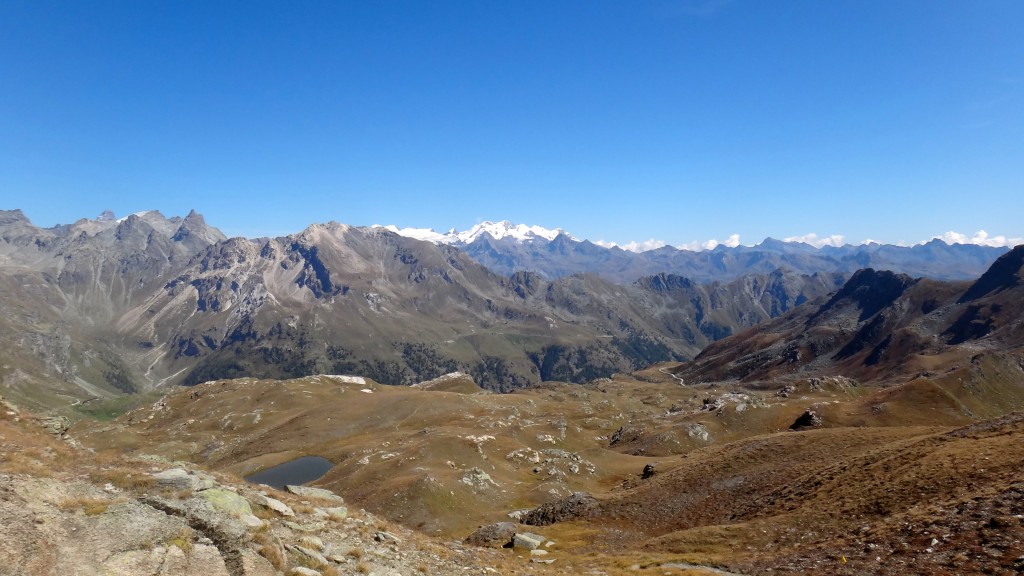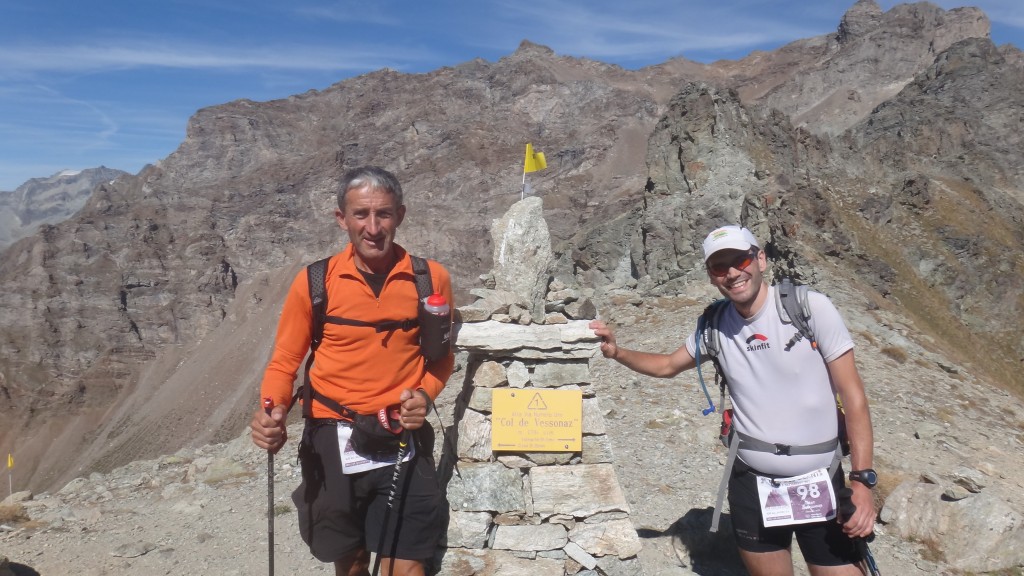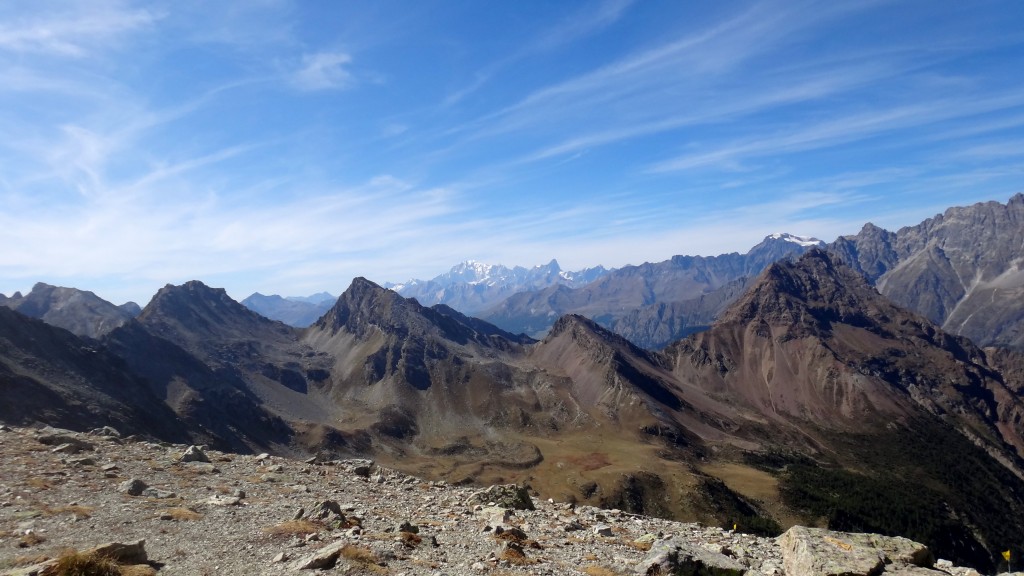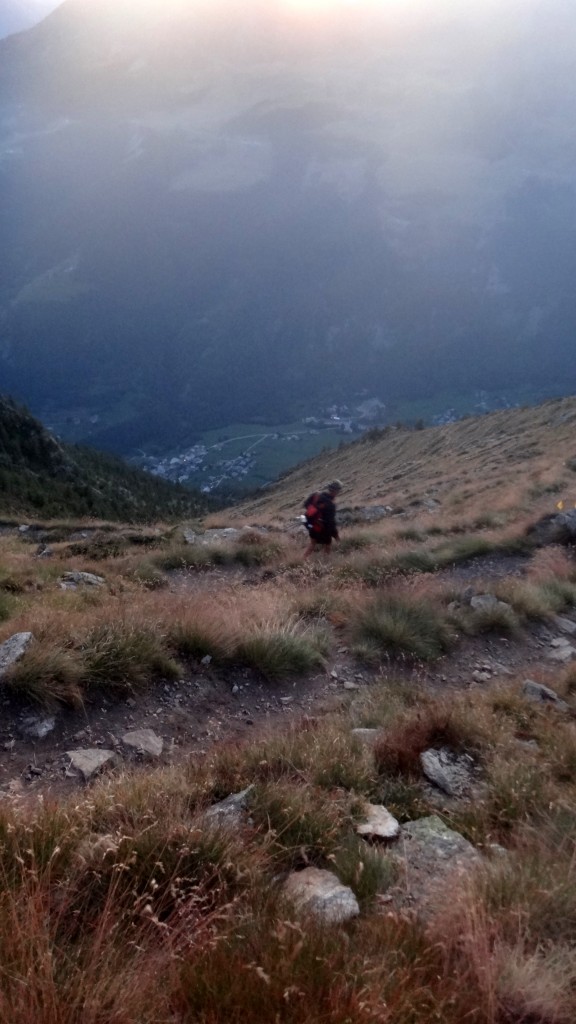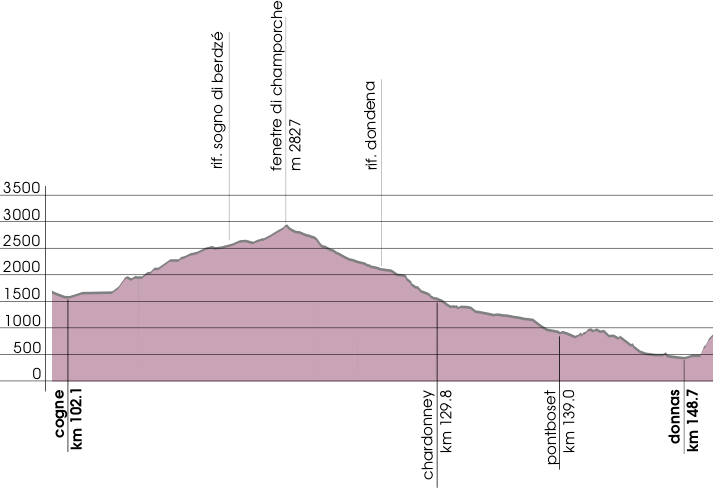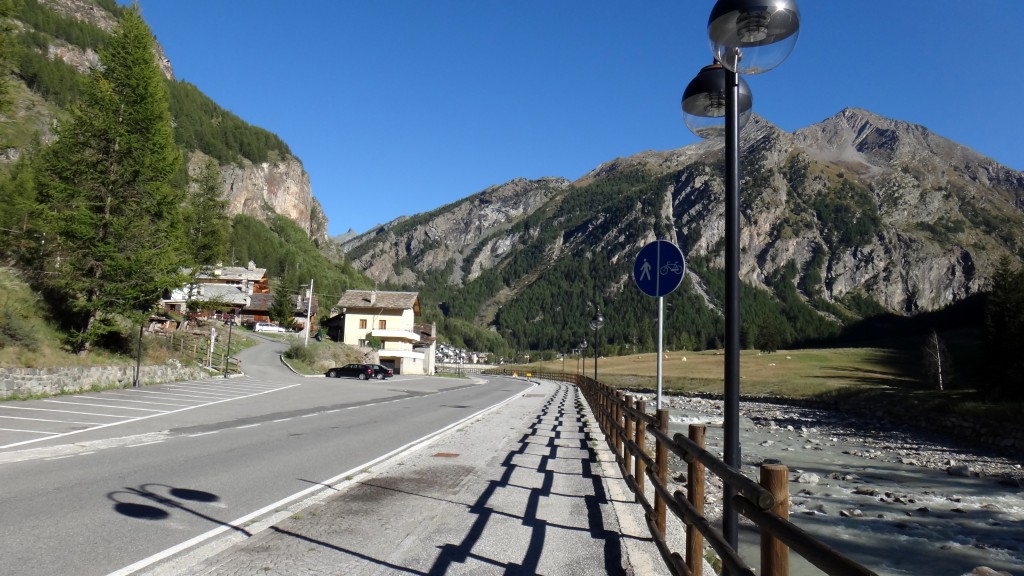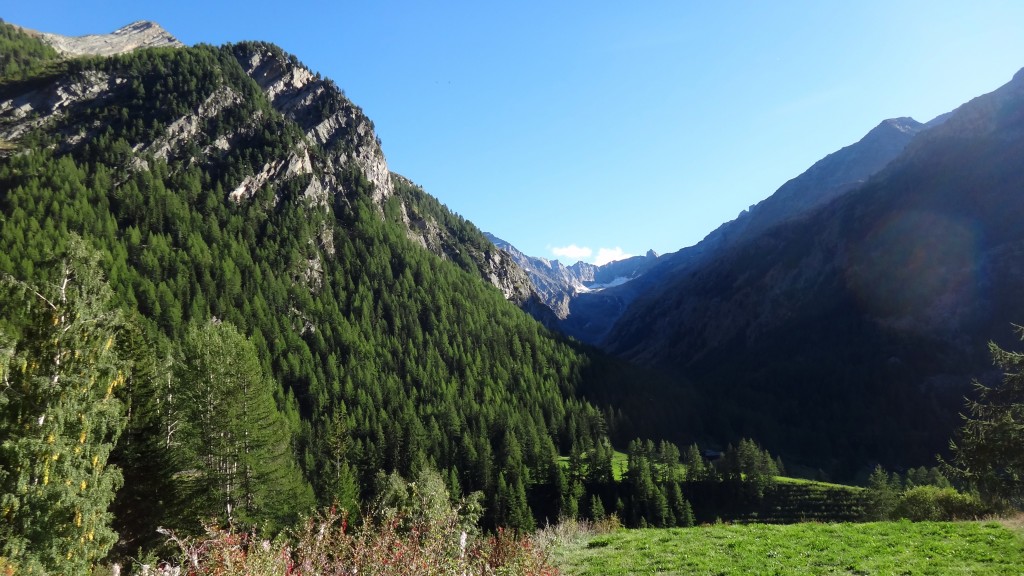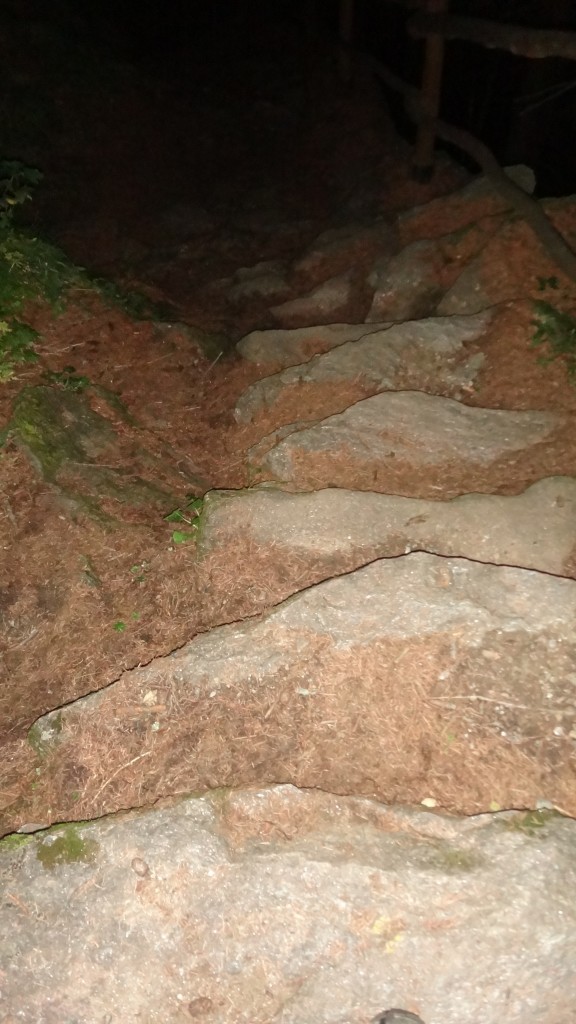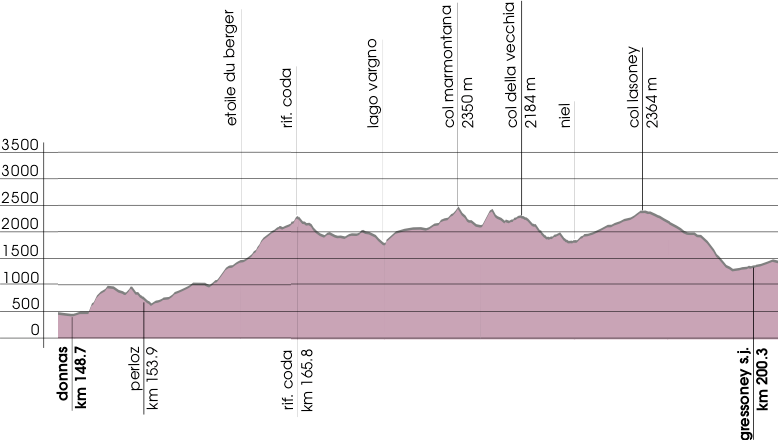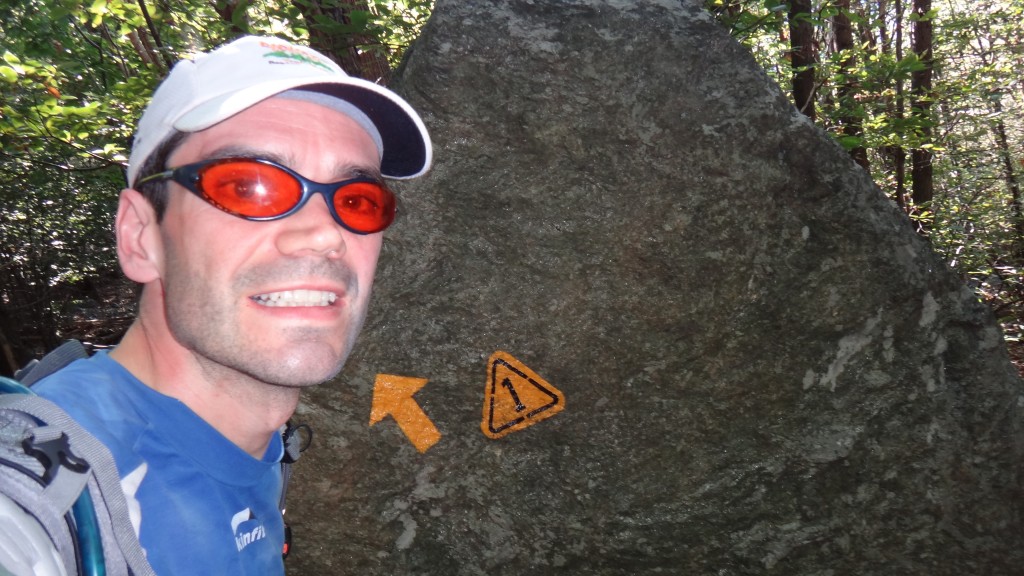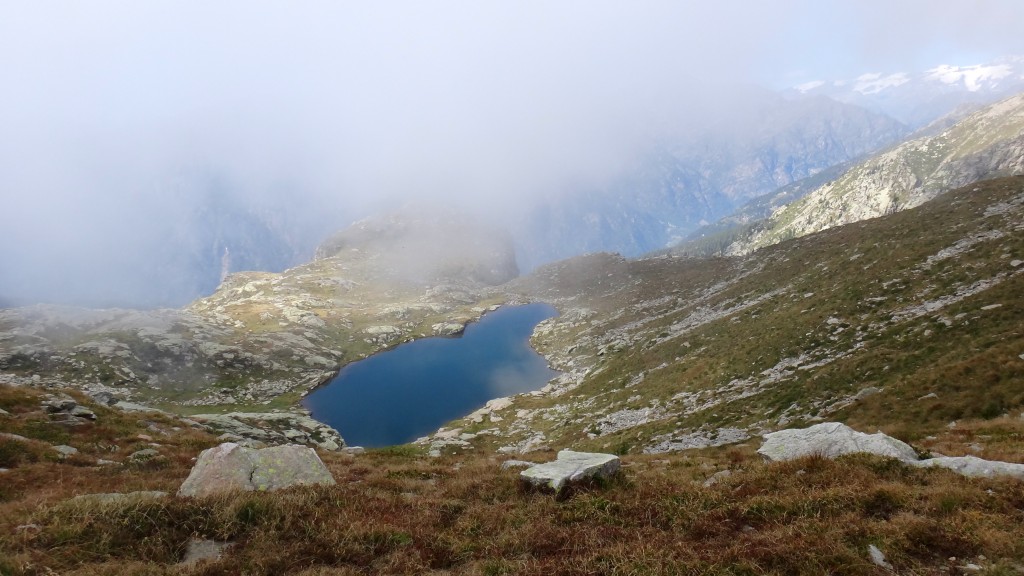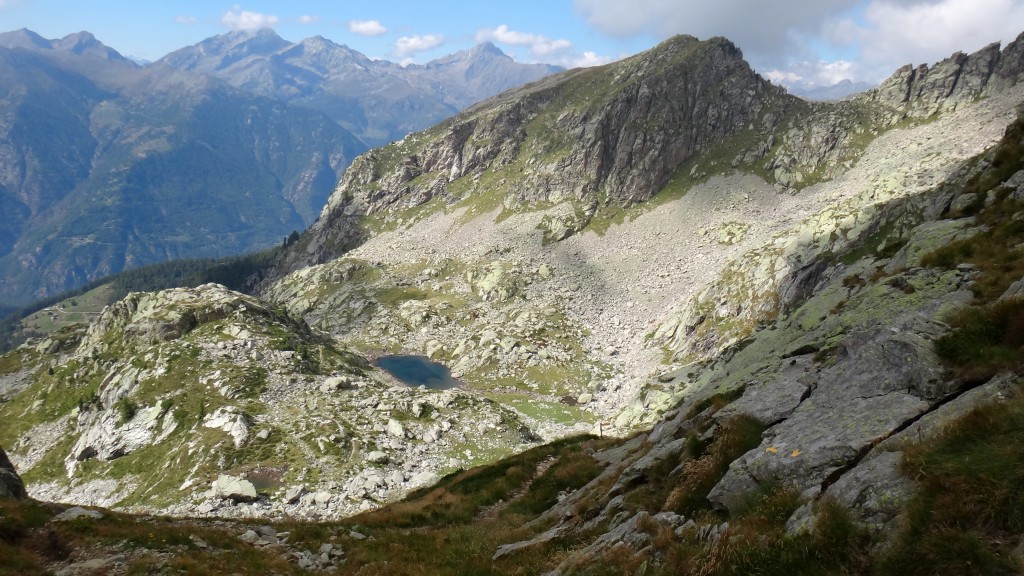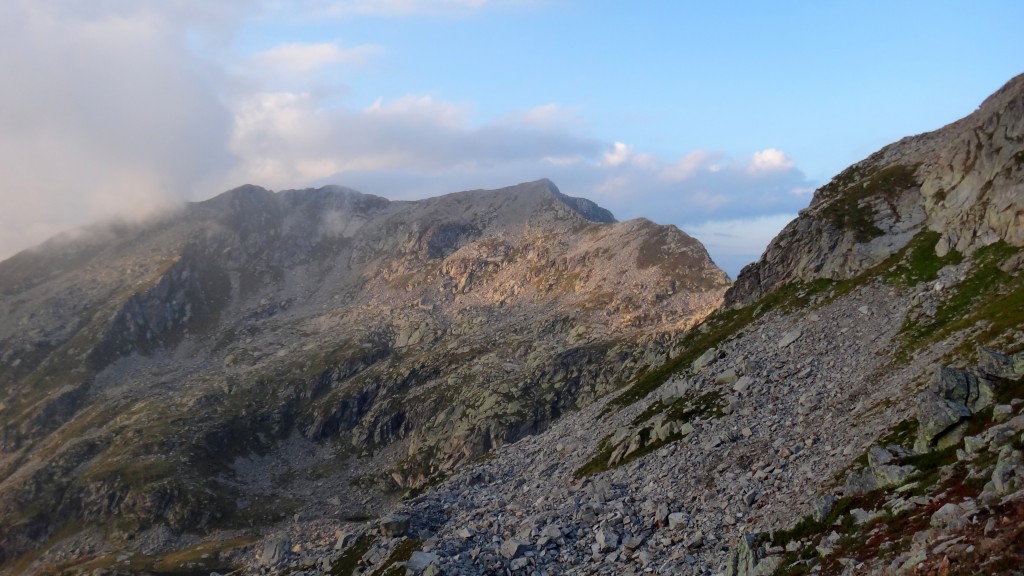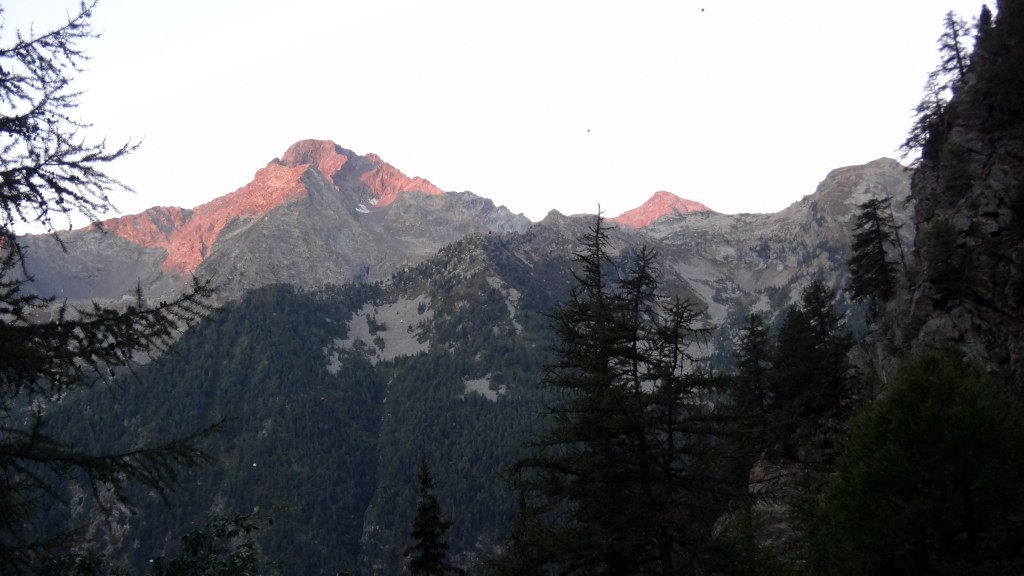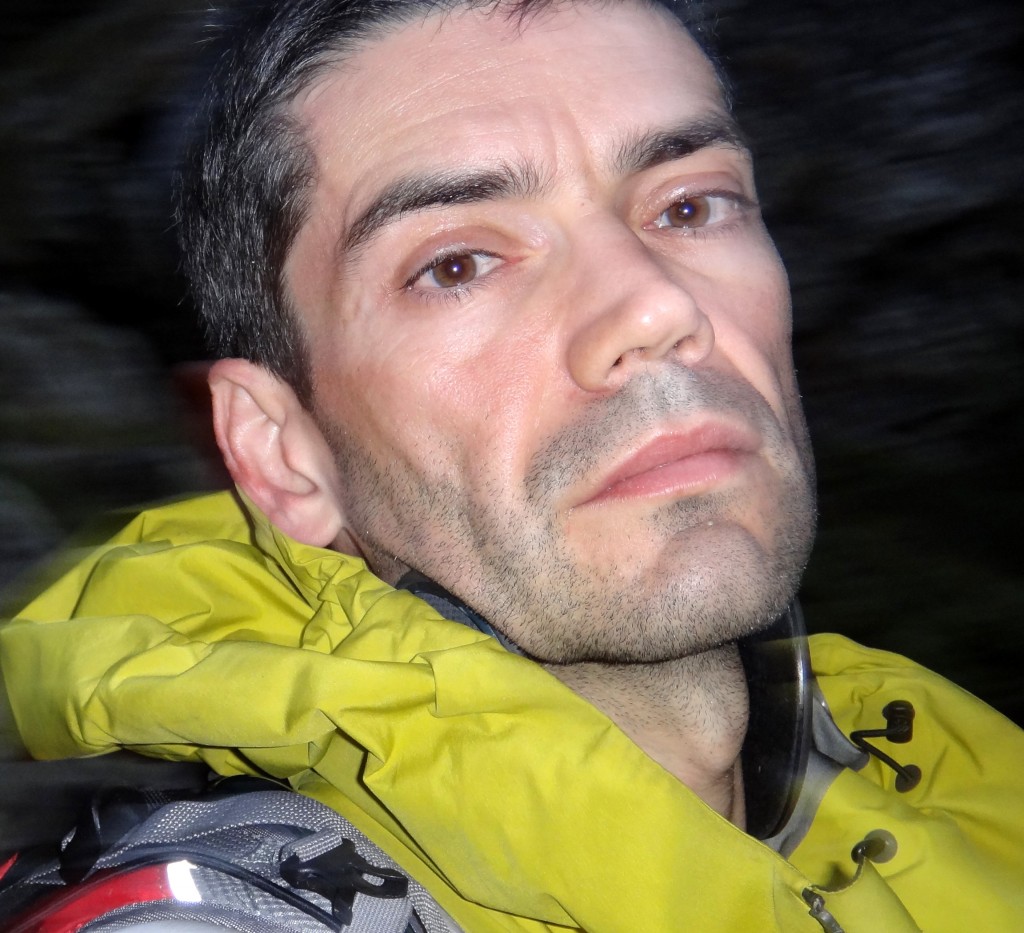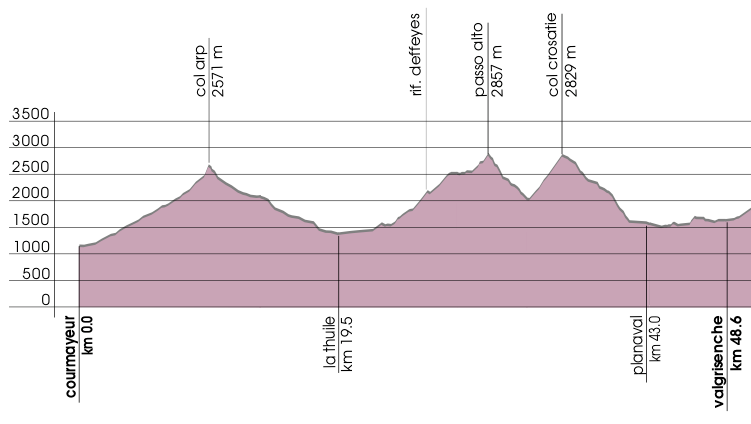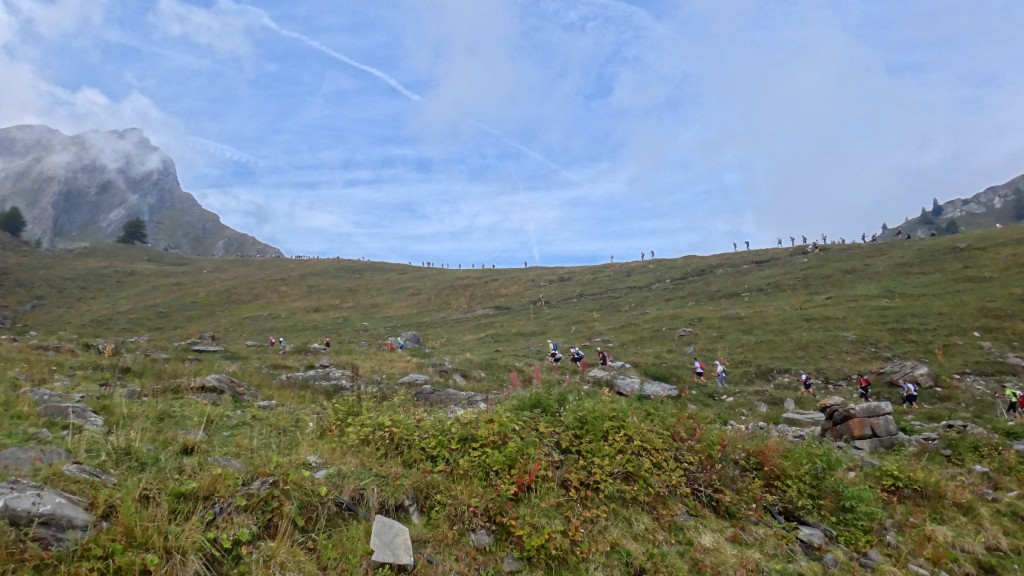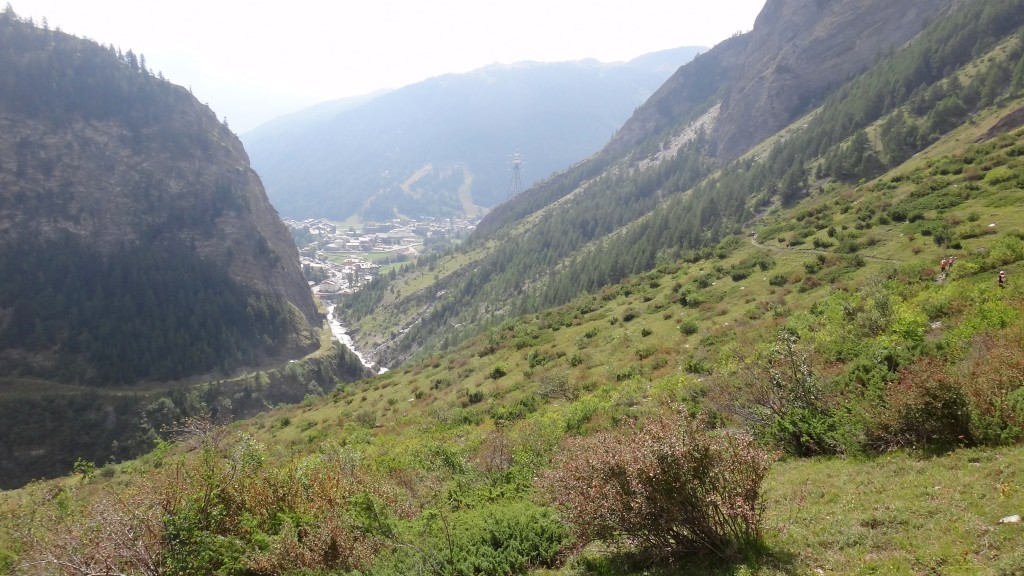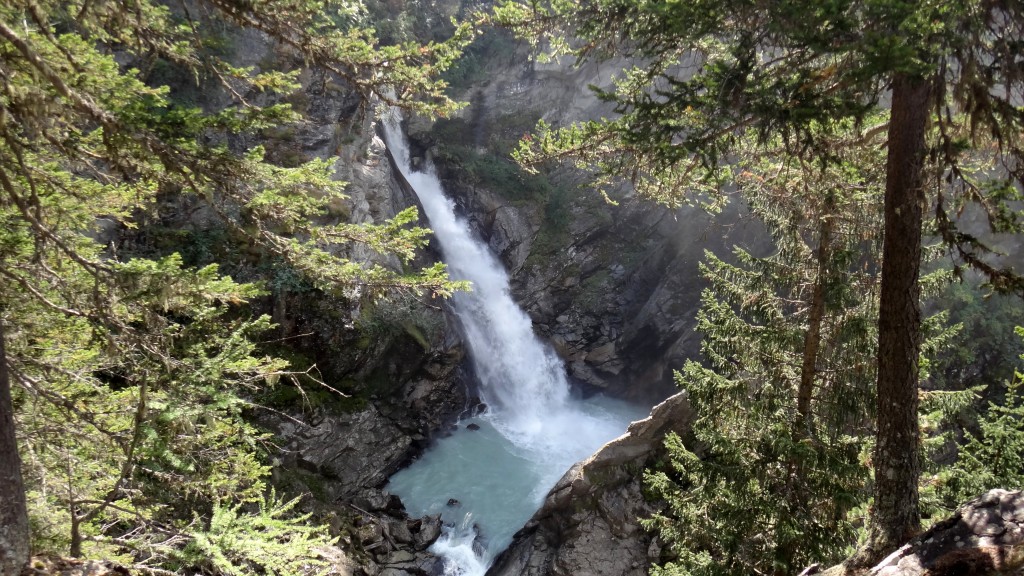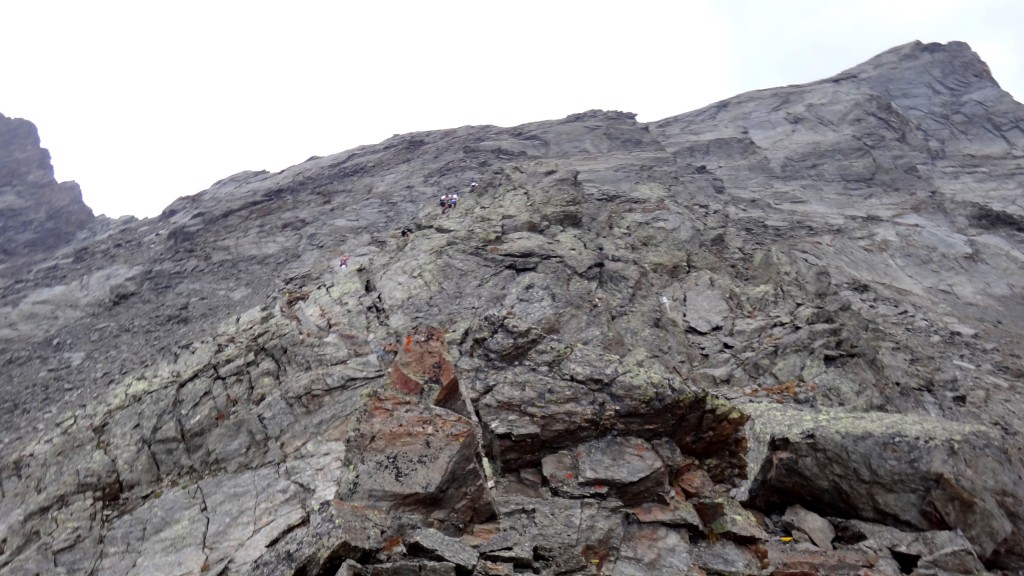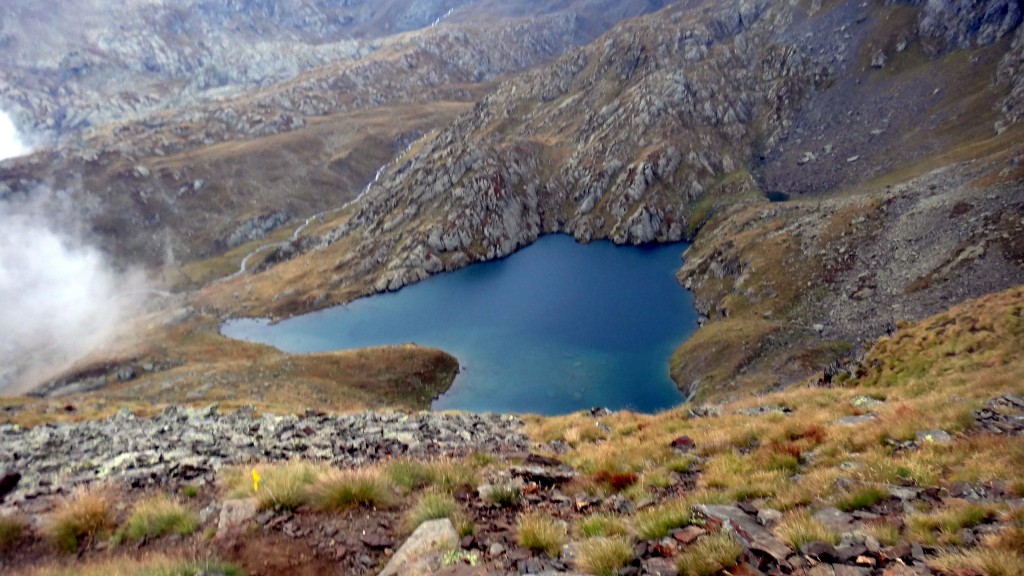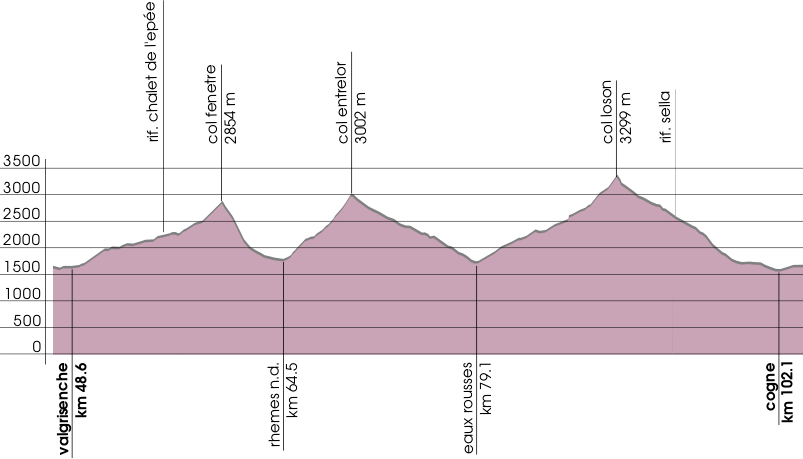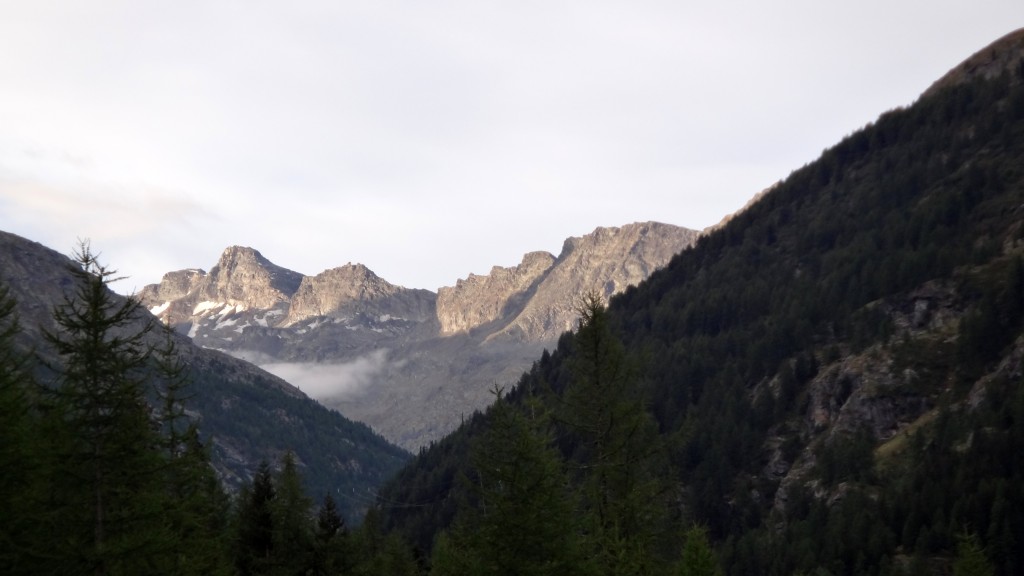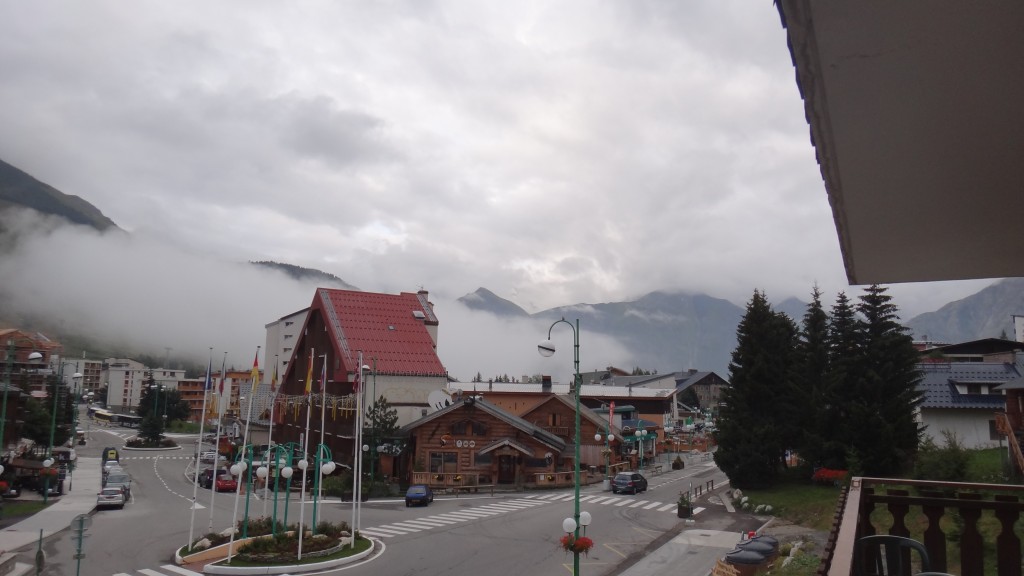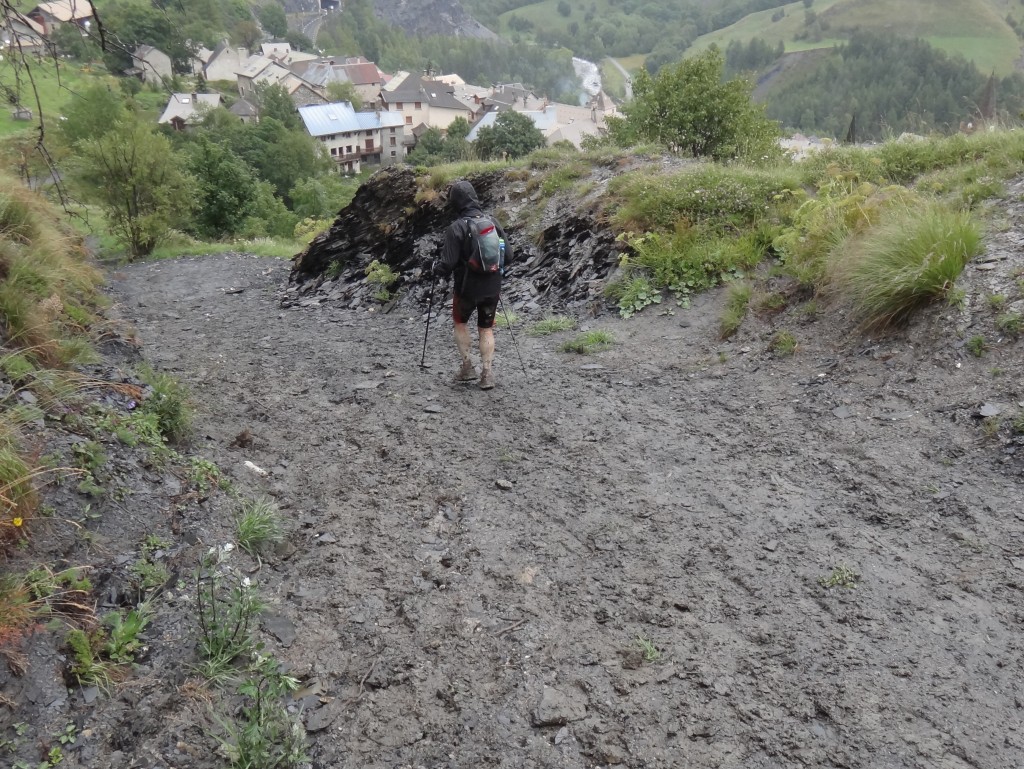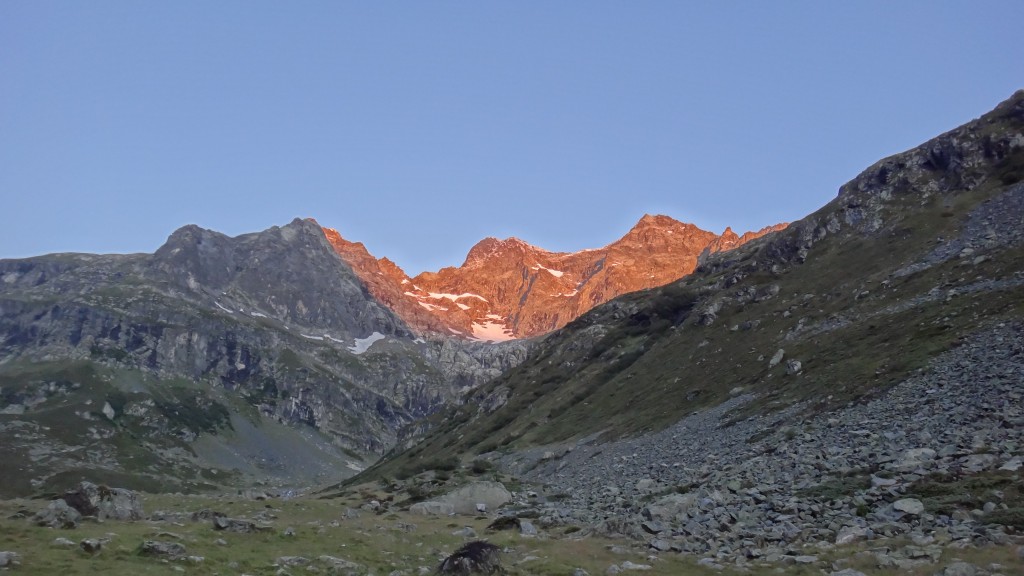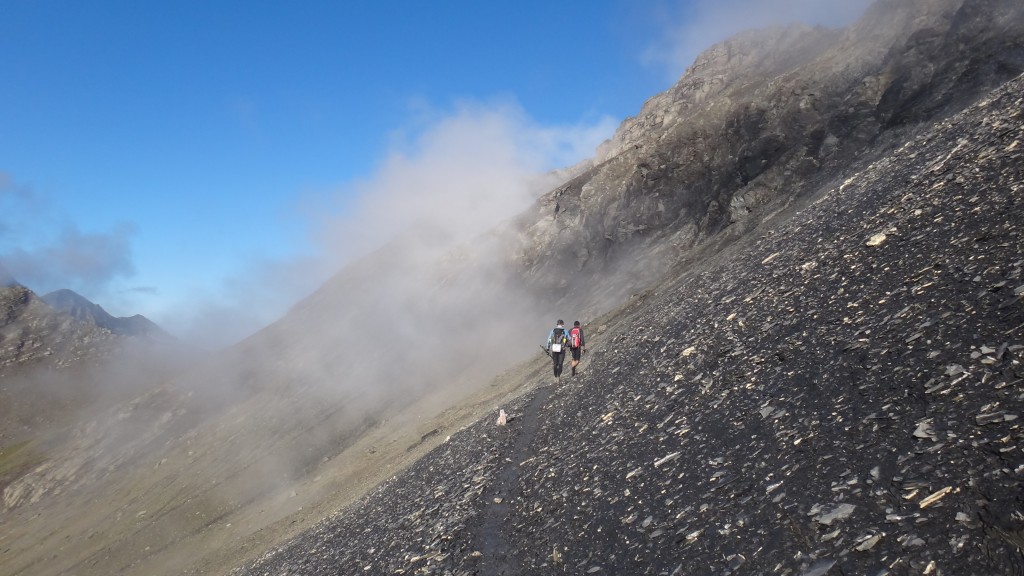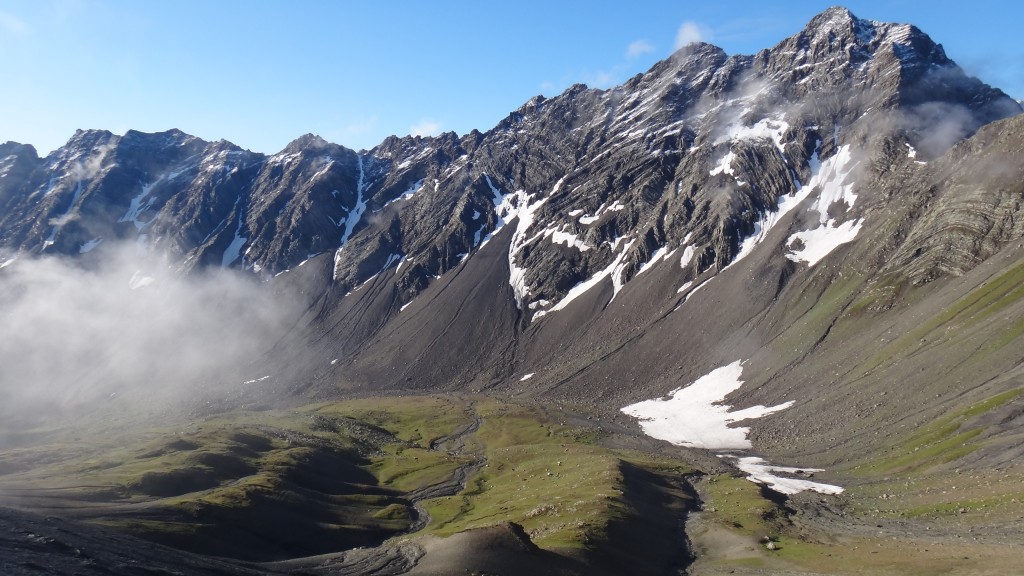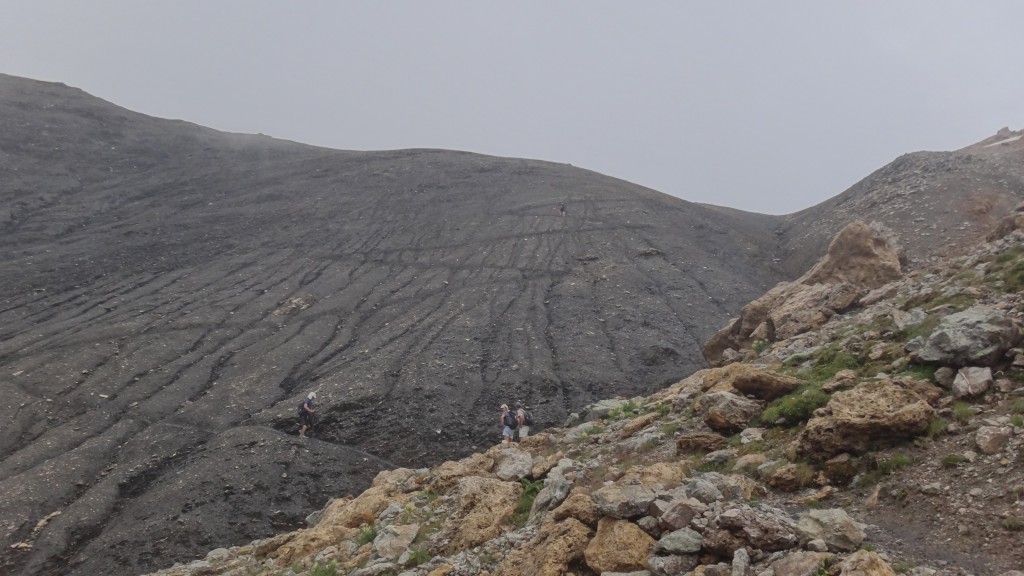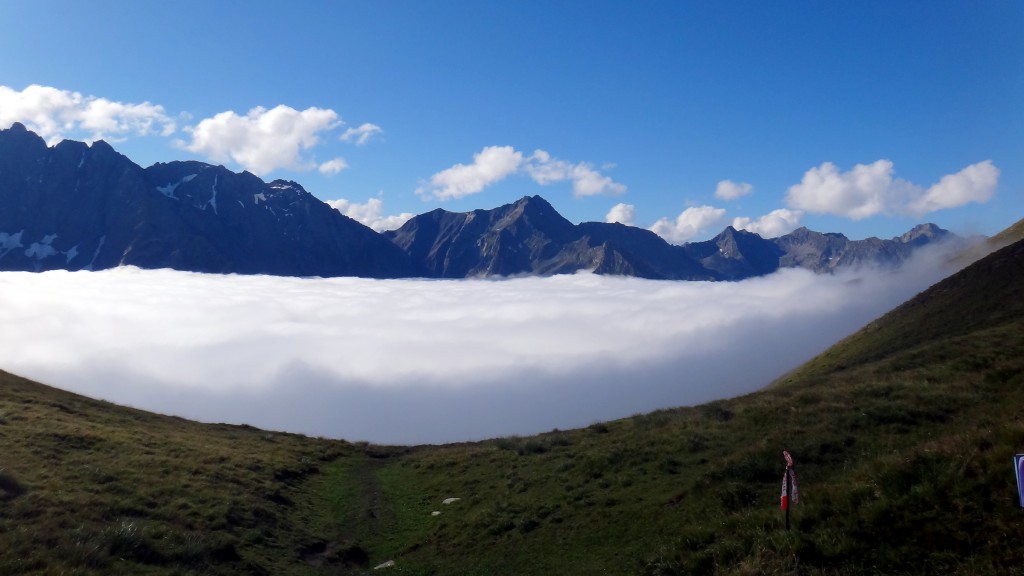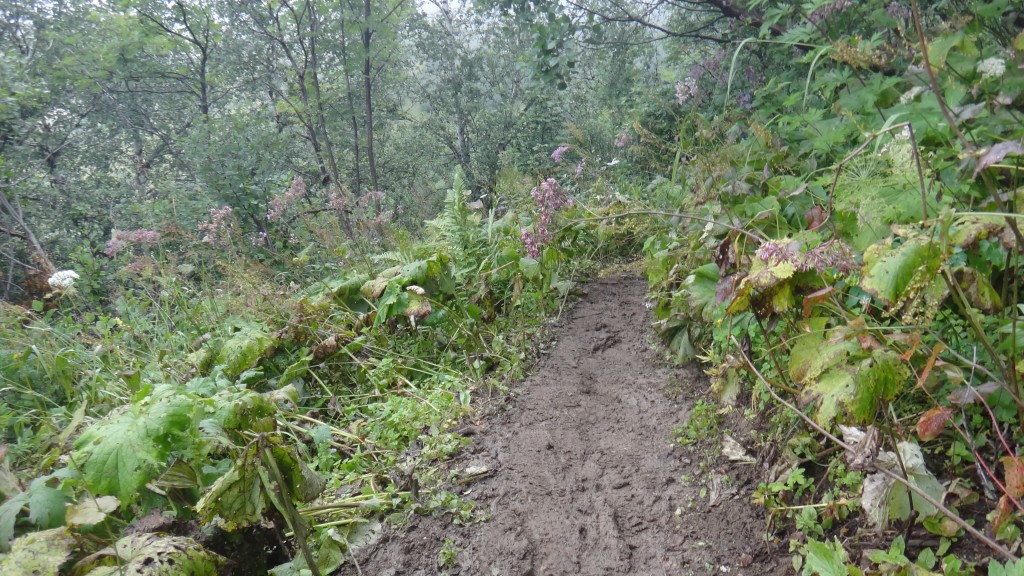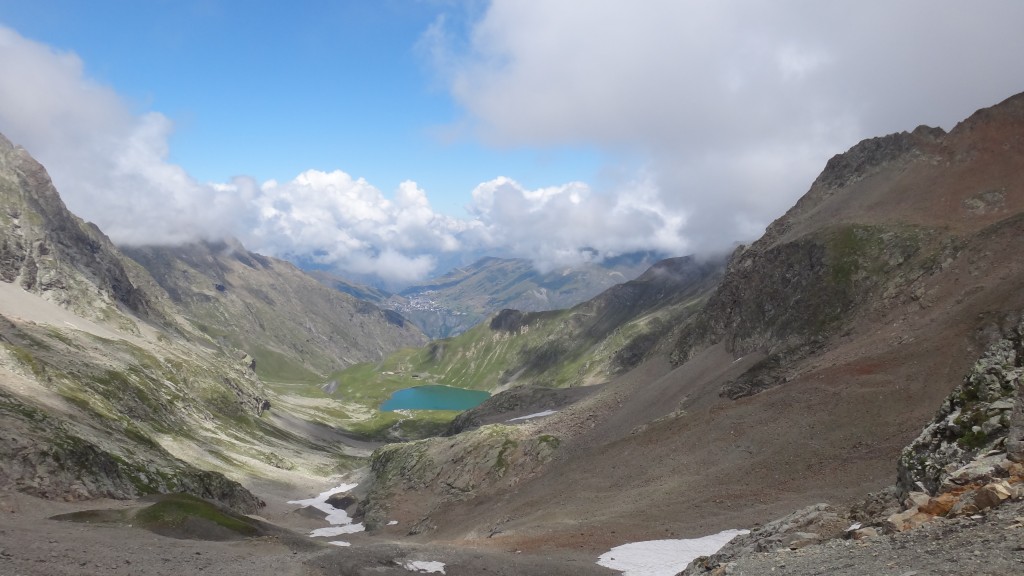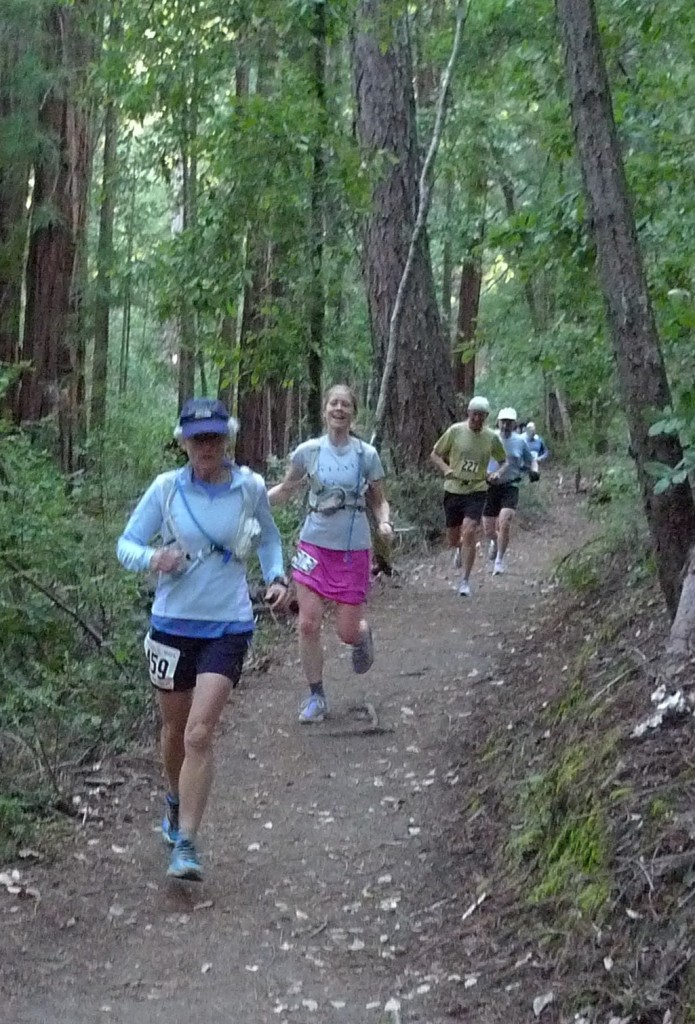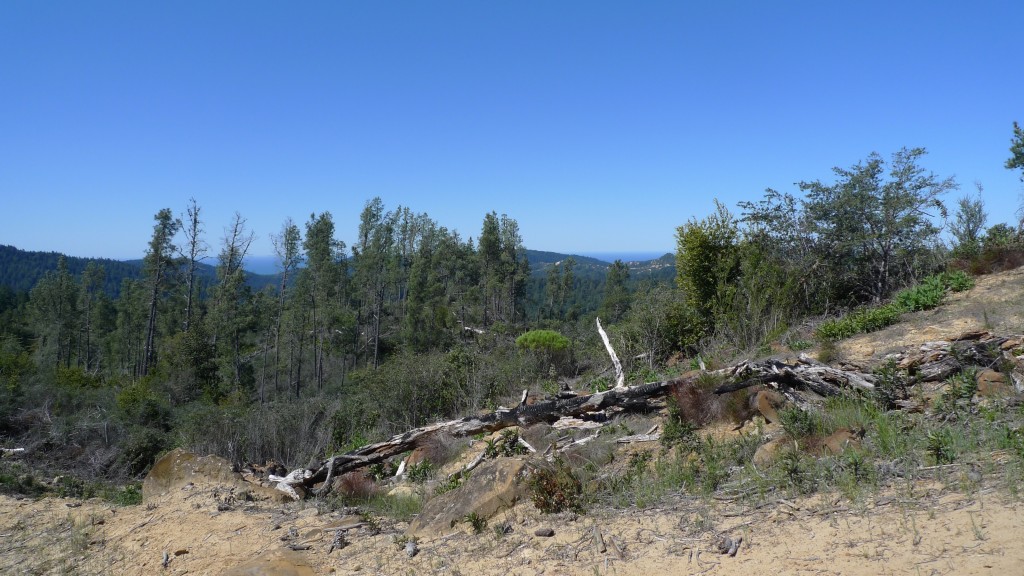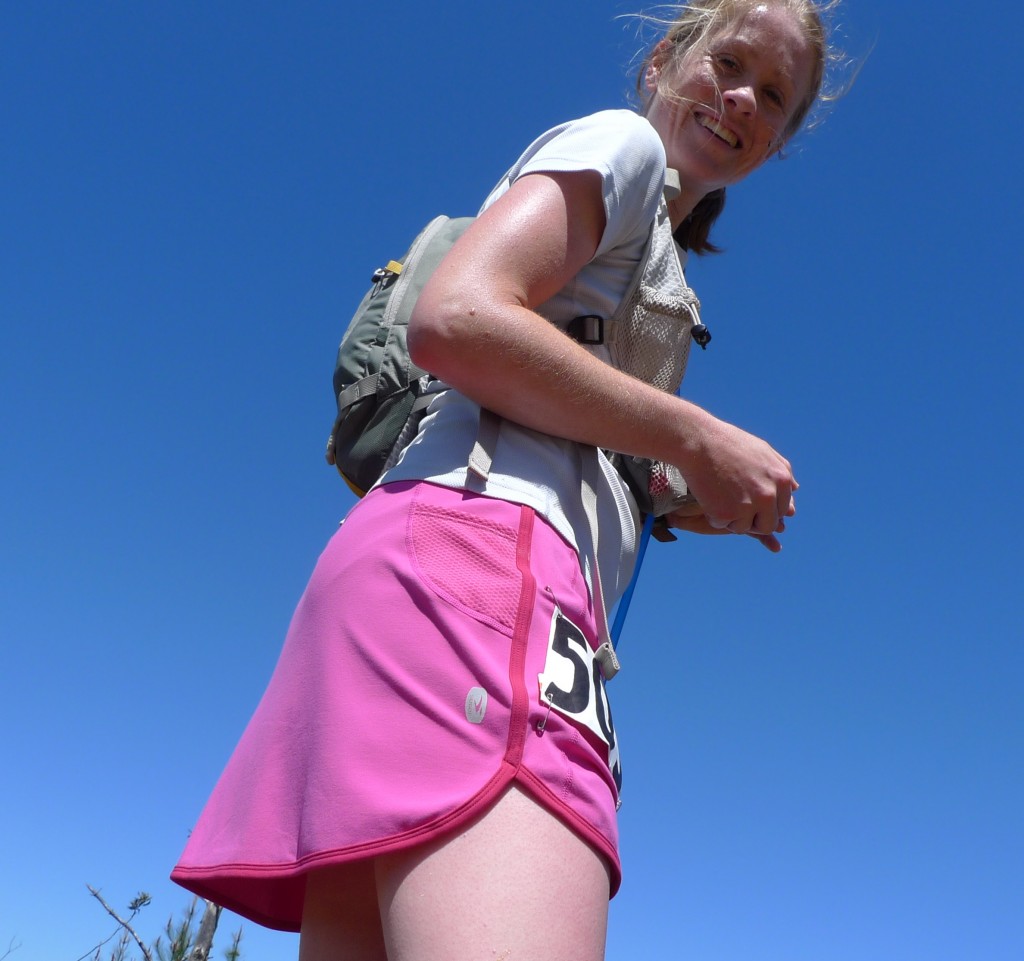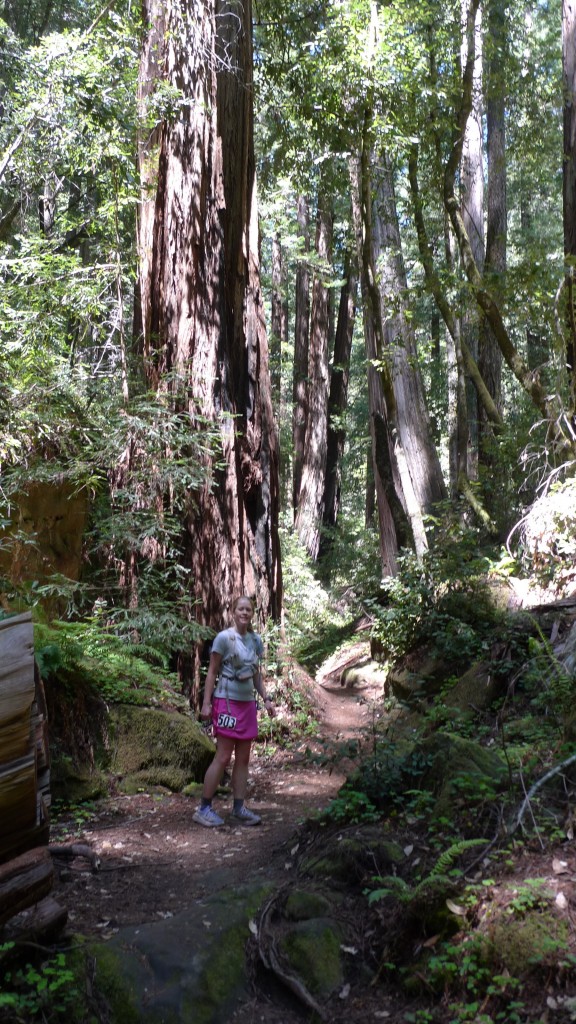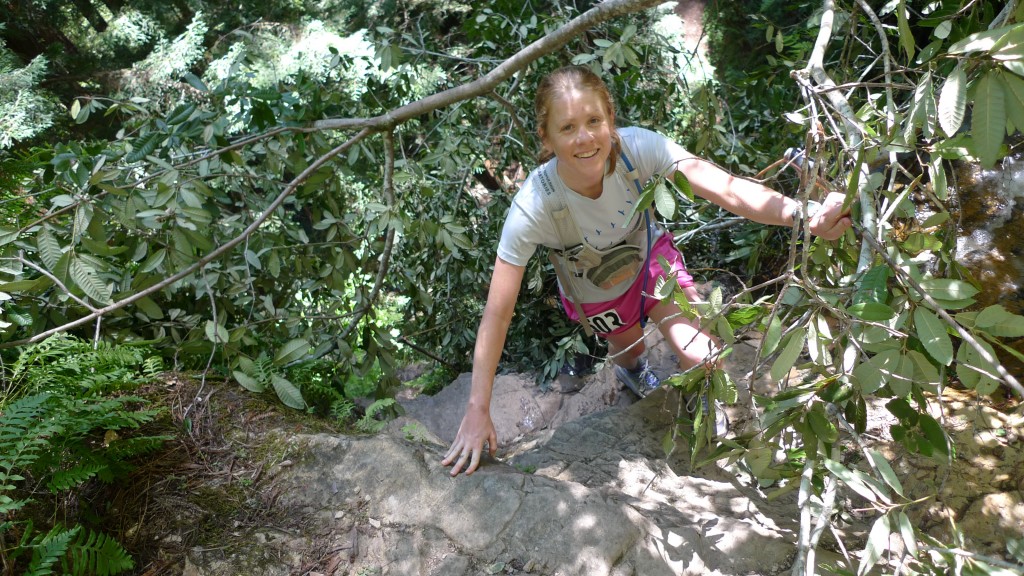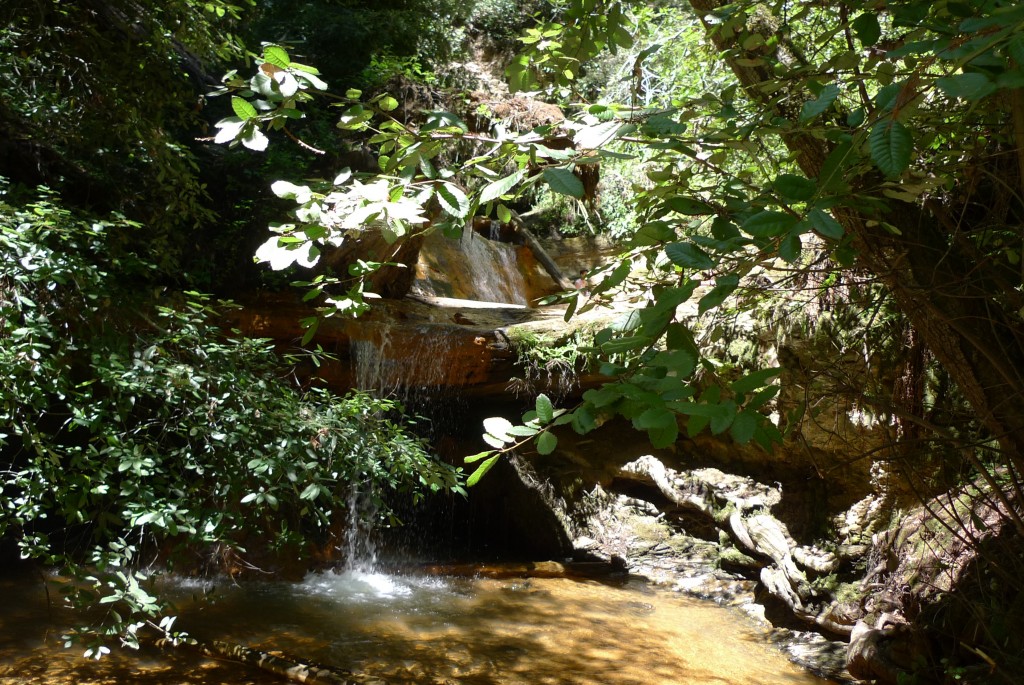First update from the Iditarod Trail Invitational: I received a satellite phone call from Beat at 9 a.m. Monday They spent most of Sunday breaking trail through more than a foot of new snow as a blizzard raged around them. In the early hours of the morning they passed the lead biker, Pete Basinger, who was pushing his bike through the snow. Beat said he was leading the entire race whenever it was his turn to break trail. It sounded like he was traveling in a group of about five or six runners. Around 4:30 a.m. Beat, Anne Ver Hoef, Geoff Roes, David Johnston and Andrea, and Tim Hewitt (and possibly others) decided to bivy on the Wall of Death near the Susitna River to await potential snowmobile traffic. When none had come through by sunrise, they resumed trail breaking. A few bikers passed them during their bivy. If conditions do not improve, I don’t expect Beat and the others will make it into Yentna Station, mile 57, until tonight. There is also a chance they will decide to rest at Luce’s Lodge, mile 50, before moving on. I will continue to update this page as I receive more information.
|
I haven’t been so worried about a race in a long time. The Iditarod Trail Invitational freaks me out like few races before. For tracking info, scroll down. It is an adventure. I am sitting in front of 40 lbs of gear, pondering what to bring, what to leave. My gear selection definitely errs on the safe side – there’s little point in shaving off even 5-10 lbs (and that’s not easy!) and take risks that could cost me the race or more. Given my limited experience in this climate, the decision is easy – the weight will make me a bit slower, but the lack of an essential item can really screw me up. I have to think back to Jill dragging her 70 lbs bike over rainy pass and my sled doesn’t seem so bad anymore. Fortunately I have at least some experience in what kinds of items I use and which I don’t, so at least I think the stuff I’m bringing is useful, and will also keep me warm to rather frigid temperatures. Still, it’s disconcerting to think about pulling this anchor for 350 miles – at least it looks like the trails will have decent glide. Then again, the required speed – ~35 miles per day – seems quite doable without pushing hard (if the trail is not horrible, of course). Looking at it as a big expedition may seem the best approach – it is very beautiful out there after all. The first ~165 miles has actually a decent amount of support, with a few non-checkpoints where water and shelter is offered. Afterwards it gets pretty wild … but by then I will hopefully have all my stuff dialed in quite well. I think 50-55 miles a day for the first 3 days could be doable if the trail conditions are good . I think an 8 day finish would be pretty great. Actually a finish would be great! Tracking info There is NO GPS tracking allowed in this race, due to some problems in the past. It’s just as well, because it’s hard for anyone watching to really interpret properly what happens and probably would freak people unnecessarily out. Race updates will be posted on facebook and on the website’s Latest News page. Every checkpoint is very remote – and updates travel slowly. Do not be alarmed when there’s no news about me for a while. Especially the stretch between Rohn and Nikolai will take multiple days without any updates. If the weather is bad and I hunker down, it could be three days – and if the updates are a bit delayed, even longer! There’s no need to contact the race organizers – everything is under control. However, I will have a locator beacon (or possibly Sat phone) with me, so if I am in trouble, I can call for help – and the coast guard or the army will come rescuin’. Needless to say, that’s only a last resort measure, but it’s there. The transmitter is built to much higher standards than the usual SPOT devices and are designed to work reliably even in the cold. Also there are plenty of runners on the trail this year, while doing this alone would be radical, honestly it’s not unlikely I’ll team up with someone, especially over rainy pass and through the farewell burn. UPDATE: I should have a sat phone so I can occasionally call Jill or receive text messages, and should I take a long time I’ll try to keep her in the loop. I probably will still bring the beacon as well, it’s not that heavy. Also if I get even so much as a text message from my work I’m counting it as a work day! HA 🙂
Too much traveling, not enough time for blogging … But I’ve got at least some pictures posted of TDG and Nepal (already!): So what’s in the plans for 2012? Not much, really. Not as many 100s as usual, but … Feb: Iditarod Trail Invitational 350 This is the big adventure of the year. Due to the length, it’s probably physically harder than TDG despite the terrain being easier (and well, if there’s a lot of new snow, it could become extremely hard). Pulling a 35lbs sled over snow is basically like running a moderately steep uphill. But really the challenge is that it’s just extremely remote, with very little support and with volatile conditions which can turn pretty frightening in a hurry. March: White Mountains 100 One of the hardest 100s, again a winter one, it’s a ton of fun. We’ll see in what kind of shape I’ll be after ITI – maybe I should try it on a bike this year. April: Zion 100? This one looks like a blast, not terribly hard but I love the area. July: Hardrock 100 I got in!!! August: PTL The big daddy of the UTMB, this one is a team event without rankings in the results. It’s self-supported (though with special rates at refugios) and unmarked. The trails look quite difficult at times. Almost as long and high as TDG, with a bit less time. It’ll be a formidable challenge. My team mate is Daniel Benhammou, who’s super strong, tough and nice. September: TDG? TDG starts one week after PTL ends. It would be glorious. And stupid. Very very stupid. We’ll see on Feb 1 if I can grab a spot … I hope not. Wishlist: Nolan’s 14 and Colorado Trail How awesome would those be (apart of the fact that I wouldn’t be able to do Nolan’s in 60 hours, but who cares, it’s not really organized anyways). But the time is getting short … That’s all the plans I have for now. Last year I raced 6 100s, 1 200 miler and RTP Nepal 150 miles stage – 950 miles. This year maybe … 350 + 2 100s + 2 200s … 950 miles again! So maybe it’s not so little.
Tappa 7 – Ollomont to Courmayeur49km – 9600ft climbing – 16:01 I decided to sleep a bit at Ollomont since I was seriously tired, my feet were hurting and I thought I would just finish the last tappa in one go. The sleeping arrangements were even worse than last year, with a huge tent that was drafty and cold with a giant noisy heated air pipe. I tried sleeping for a while in one of the beds but even with two blankets I was cold from the draft from below and only dozed a little, so I just sat a while in front of the heated air pipe trying to warm up. It was pretty miserable. I had the medics take one more look at my feet and they applied a few things and drained some blisters. Next to me a young doctor was working on another broken racer who had various painful looking issues. The doctor was at the end of his shift and shaking his head gently he suggested that we should enjoy this area like normal people, sort of hopeless like he was telling crazed drug addicts to lay off the crystal. He obviously thought this was neither reasonable nor healthy nor fun, and somehow I could not disagree with him. My legs had become swollen to almost comical proportions, and I could actually feel the swelling straining against tendons and tissue in a way that was a bit worrisome and affected my walking, sort of like something was gonna pop or I was gonna burst and emit a gush of water. Despite staying almost 4 hours in Ollomont I was not well rested when I started to conquer the final two passes at around 2am. The climb to the first pass was relentlessly steep but on easy terrain – all the really hard stuff was now behind me. But though the trails even became dirt roads I was so incredibly tired that I kept veering off, almost walking off the trail. No amount of slapping myself, biting my lip or pinching myself could keep me awake, and my eyes literally closed while I was walking. Occasionally I suddenly seemed to wake up from microsleeps and strange dreams, disoriented and feeling detached from myself and reality. Still, there were no hallucinations to speak of during this race, just a leaden tiredness. Once I got to rif. Champillon I realized I had to take another nap – only 35 minutes, but that nap made all the difference. I still took my time there, but once I left I felt much stronger. The col. Champillon was steep but tapered off and in a way anticlimactic, but the descent was technical, steep and, as you surely guessed, endless, traversing along a mountainside further and further into a valley, teasing you with views of farms and possible places where the next aid station might be. My feet were still getting worse and I was getting rather grouchy again. Finally I hit the aid station, and the usual program was called for – refuel, drink some beer, tape my feet after making for each toe a decision about if it should not rather be cut off altogether. Narrowly I decided to keep them. The aid station was special in that we were served local smoked meats and specialties. Last year I indulged in the somewhat rawish meats which were really tasty but later made me feel sick (probably psychological, however as we all know that’s as good as real in an ultra at that stage). This time I stuck to cooked ham which was delicious. The next section was a very easy very gradual very long trail down to St. Rhemy. To my surprise I was able to run a very fair amount of it, leaving the other runners I had leapfrogged with the same morning fairly far behind. Only towards the end I had to slow down on account of my screaming feet, and my bliss was all but gone by the time I reached the aid station. It was now hot, I felt like crap, but at least there was only one more pass to go! In St. Rhemy Uwe finally overtook me as I had expected to happen much earlier, though Thomas would finish a little behind me. He invited me to join him for a while, but I kept messing with my feet. I knew the ascent to col Malatra was significant and in parts quite steep, but 3500ft – nothing, right? I mean, I had climbed 75000ft til here … My foot pain levels reached new heights as it felt like I was cutting into my left foot at each step, and my callous under my left big toe was burning so badly that I wanted to chop it off. One step I almost burst into tears, uncontrollably, and despite being so close to the finish the thought of even the last 25km made me feel a deep sense of desperation. I reached the rifugio before the col mentally and emotionally crushed and felt no urgency to move on. I took it easy, took my shoes off, and just sat there. An aid station guy pointed me toward a creek running under the rifugio – I could cool my feet there. Since it couldn’t get any worse, I decided to do that – crystal clear ice cold water. Heaven. I decided to finally take off all the crap that the medics had put on my feet. I had developed blisters under my heel blisters which required me to use a knife to cut into rather deeply to drain them, and I simply lathered everything in Hydropel. Some of the bandages had cut into my skin rather than protect which explained some of the pains. I even investigated my orthotics to see if there was any foreign object that could explain my toe pain, and to my surprise I found a layer of gravel had embedded itself in the orthotic where the layers had delaminated. I could even feel a little sharp rock poke up just enough under my toe to be an irritant. No wonder I felt so much pain! I don’t know if I really resolved my issues or if it was all in my mind, but once I left the aid station my feet were in much better shape. I was moving very strongly, partially since I was worried that Steve and Harry might show up behind me, laughing at my no-sleep approach (as it turns out they were quite a bit behind still, but a little paranoia is always a good motivator). I motored toward the col with good speed and reached it in a great mood. 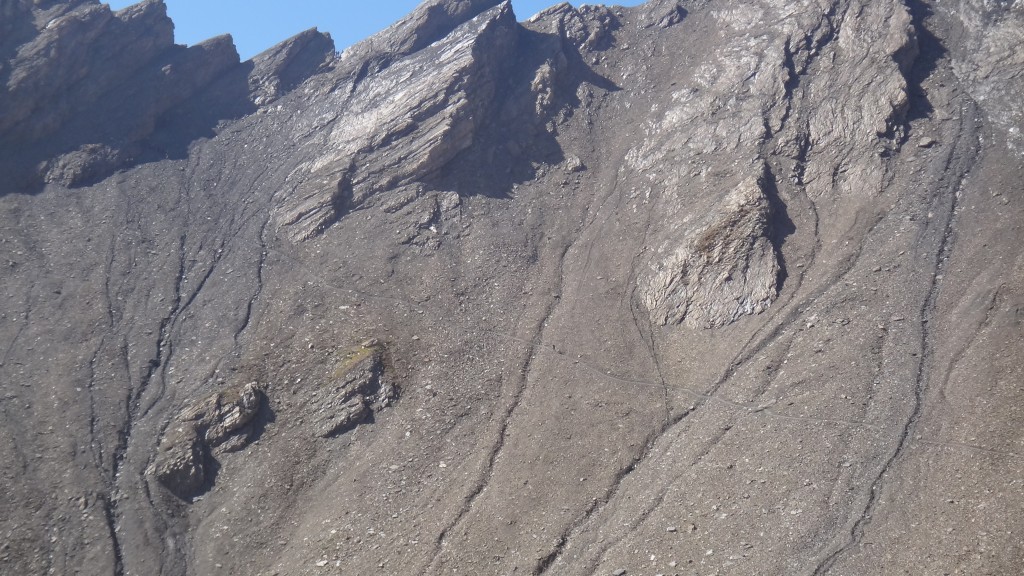 Closeup of the trail ... it gets crazy steep at the end. Click on the image for the large view and you can see people in the 4th nothc from the left to give you an idea of the scale. The initial descent of the col was very gradual and easy, and I was able to run it fairly well. Even when it got steeper, I kept it up, just occasionally stopping and admiring the views. I called Jill from the col and she was going to meet me halfway so we could go together to the finish. Life was good! I reached Bonatti feeling strong! I ordered a soda and had some food. The next section to rif. Bertone was actually overlapping with UTMB (as well as most of the way to the finish) though in the opposite direction. It was rolling and fairly easy, though we climbed quite a bit back up. In 2010 this section was extremely difficult for me as I was so sleep-deprived I could barely function to the level where I didn’t know where I was or if I was going to walk off a cliff, but this time I was going extremely strong, running uphills and looking forward to meeting Jill, all the while hoping Harry wouldn’t catch up to me all of a sudden! When I met Jill I had made excellent time and soon we hit Bertone. The last descent was technical and steep, with rocky trail. I couldn’t muster any more running and we power-hiked down the trail. It looked like I would finish quite a bit earlier this year, not as much better as I had secretly hoped, but what did it matter – finishing this thing was major. Also I was happy I was gonna make it to the Greifensee half marathon which my brother signed us both up for – he was running it as well. “So, maybe we can drive to my brother’s tonight, so we can get some good sleep before the half marathon tomorrow?” I asked Jill. “Are we really gonna do that stupid race?” Jill replied exasperatedly. She had barely slept the whole week between jetlag and meeting me at the worst possible times at the live bases. Still, I pouted – I wanted to see my brother, and hey it wasn’t stupid (of course it was a stupid idea!), and after 128 hours you can get a little sensitive and emotional, you know. But soon enough, all was forgotten, especially when we finally hit the beginning of the paved section. I started to run and Jill said I should go ahead. I took off and ran towards the finish. As soon as I turned into the city I was greeted by more and more cheers, cowbells and high-fives – it was as if I was winning this thing! The atmosphere was crazy energetic, and I held up until I ran into the finish area! There were even kids getting my (and other finishers) autograph, it was quite a spectacle. A little later Thomas made it into the finish as well, and Jill showed up to give me a big hug. It was done! Tappa 8 – GreifenseeWe had pizza and beer and made our way to our apartment – another 300ft or so of climbing. I guess at this point it didn’t matter anymore … and strangely, I felt stronger now than I had before the race. We agreed on driving to my brother’s in the morning – it was a 4 hour drive to my brother’s and another 2 hours from there to the Greifensee race. Wisely I had packed most of my stuff before the TDG started so I didn’t have to do much. The shower was not as painful as anticipated. We got up very early the next morning and were on our way. We had a good breakfast at my brothers and went on our way. My feet were of course still crazily painful, particularly my heel blisters, toes and my comically rising big toenail with its huge blister underneath. I wasn’t quite sure if I was able to even walk it, and I got a bit worried about the cut-offs. I applied some tape, took it back off. The Greifensee lauf is a huge event, a zoo with 15000+ people, and there was no escape nor rest. I went to the start (which was a 1-2 mile walk in itself) with a tube of hydropel firmly gripped. At this point, the TDG was still happening, a few hundred km away. It was surreal. As soon as we started I fell into a run – and it didn’t feel so bad. I was rather tired, but put up an even pace. I even left Jill behind and though it felt hard, my feet allowed me to keep going (gripping my hydropel) for a slow but satisfying 2:01 finish. You gotta realize you still have to run to get that, so I was pretty happy. As soon as I got into the finish my feet were hurting again like hell, go figure. All in all it was a worthy adventure yet again. TDG is insanely hard but eminently doable if you just keep going, even slowly, and I can only recommend this race to anyone. A million thanks go to Jill, who was super sweet and supportive and made this a lot of fun, to Martina, Harry and Steve who are always a blast to hang out with (and Martina for supporting us all), Anne, Uwe, Thomas, Nicky, Stevie, Doone, Dima and Karen and many others for fun company along the way, Carlo Favre for awesome company and sharing his ricotta cheese with me (he finished 4 hours ahead of me, probably because he had more ricotta!!!) and all the other competitors, helpers and friends. Tappa 5 – Gressoney to Valtournenche36k – 9000ft – 15:12 without stopped time at either live base
Dima had caught up with me again and we decided to leave together. I knew the initial stretch out of Gressoney was flat for a few kilometers, and I was very happy to have Jill join us. To my dismay my camera had stopped working (despite showing a full battery it emptied quickly for some reason) so I only have very few camera photos from this stage. Of course, after about a kilometer I had to stop to yet again work on my toes. I had a hard time finding anything that really worked, and I kept putting tape on and off. At this point, any time goal had lost meaning, though I was still a bit nervous that Harry and Steve would catch up with me, but even so – I pondered yet again if I was going to be able to finish this. The climb to Alpenzu was not as much of a shock as last year – basically you go from flat road to damn steep trail right up to a 1300ft climb over a 1 1/4 mile or so, a rude awakening. Dima decided he had to take another nap (if he hadn’t slept so much, he’d beaten me by probably 4 hours …) and just laid down at the side of the trail – an enviable capability for rest which I was not able to muster. Jill and I kept going up in the rising heat of the day until we hit Alpenzu, a little sparsely stocked aid station. The folks were super nice and offered Jill food and drink although she insisted she wasn’t part of the race – something that I’ve seen at many aid stations, also for other crew people – generally the volunteers and rifugio people were extremely supportive and nice. Sadly they didn’t have any ice cream (and more sadly europeans don’t see any need for ice either, so we got to drink luke warm cola all day – though the countless fountains had crystal clear ice cold mountain water to make up for it). After Alpenzu Jill and I decided it’d be proper for us to split ways though it was so enjoyable to have her with me and we agreed she would look for some trail to explore the area. I continued the long way toward col Pinter which stood almost 5000ft above Gressoney. The ascent was relentless and fairly steep, and about 1000ft below the col I had to stop yet again to fiddle with my feet. A little ways back I saw Jill’s limey green cap, she had decided to make her way up to Pinter as well, and a few minutes later she had caught up with me. I let her go ahead and she waited for a minute at the col, where she took my picture. In good tradition I had brought a rock from col Loson for her, which I handed to her. She decided to take another trail which would lead her to Testa Grigia on a rather dicey climb. The descent from Pinter was one of the more rugged ones in the race and I was a bit bummed I couldn’t show Jill. Soon though the trail tapered off and rolled after what seemed like an eternity of running through tiny apparently deserted mountain villages into a checkpoint just before the main checkpoint of Crest. It was very hot, and to my delight they had a sign for ice cream, so I asked if I could buy some, and I ordered an Orange soda as well. The proprietor led me to a chest of ice cream and when I tried to pull out my wallet he refused – he even let me take two – an ice cream bar and a cola popsicle – maybe the best dessert I’ve ever had in my life. Refreshed I made my way on to the rif. Crest – along the way I had to stop yet again to work on my feet – while usually blisters stop hurting after a while the pain had become very annoying and it took a lot of mental effort to try to ignore it to the level that I wondered if there was some other damage to my toes. At the rif. Crest I was treated to a free espresso and I started my descent to St. Jacques with some reservation. Last year this was when my knee got really bad and it had taken me unexpectedly long to get down – I remembered an endless very steep trail, followed by extremely steep roads mixed with the extreme frustration of not being able to move well. This time the descent felt somewhat shorter, however I had to stop yet again for foot management halfways down – it was getting quite ridiculous now. I kept leapfrogging with other racers who kept asking me if I was ok, looking at me with mild sympathy, as much as they could muster on top of their own misery. I took a long break at St. Jacques – again working on my feet, this time not asking for medics to help. My mood had distinctly darkened as I felt myself slowing down and feeling down, all the while I never really felt athletically too challenged on the downhills. I was looking forward to sleeping at the next rifugio, Grand Tournalin, where I had my best sleep last year. The climb to the rifugio was only 2400ft over about 3.1 miles – still at this point it would take me probably 1.5 to 2 hours to get there. It got dark just when I passed next to a small creek – last year I hit this section deep at night in an almost unconscious state, barely able to stay on the trail, faintly worried about falling into wat sounded like a dangerous river. It surely didn’t look all that bad now, and the climb went by a lot faster than last year. The rifugio was very welcoming, and I slept for just under an hour at the perfect time to refresh myself for the night. Just as I was about to leave Dima came in, looking tired and grumpy. I unsuccessfully tried to go to the bathroom (still no luck!) and made my way into the cold. The climb to col Nana was easy at first but involved some scrambling later on. I loved being on this high pass at night, and thought I would celebrate by finally reliving myself, but I still could not book any success. It was really starting to bother me now … I don’t remember much of the 4000ft descent but it must have been slow since Dima arrived at the next live base almost an hour before me – he must have passed me during my off-trail outdoor escapades (he ended up leaving there an hour after me though). I reached Valtournenche at around 1am, and have little recollection of how I got there, but it must have been pretty painful since I wasn’t in a good mood. However, Jill was sleeping in our car on the parking lot right before the checkpoint and I was enthusiastic that she was there! She gave me a nice backrub again (by now my shoulders were very tender, especially my left shoulder which had been acting up in previous races – often I would just drop my left shoulder strap and carry my pack on the right shoulder alone …). While I fixed my feet and replenished on food (though my stomach now felt odd and I didn’t really have a great appetite) my german buddies showed up – Uwe, a very strong runner I ran with earlier at the Tour des Oisans and who I knew would handily beat me, as well as his friend Thomas who I had run with in the first stage. They had slept for a number of hours each night and were by now a lot faster and a lot fresher than me. Thomas in particular was outright chipper, much to my dismay – now I was the grumpypants. To be honest I was almost angered that he seemed to do so well while I was in so much misery and I think I even snapped at him, in hindsight a very embarrassing moment. Tappa 6 – Valtournenche to Ollomont44km – 11200ft climbing – 19:18h excluding time at either live base I knew that the next tappa would be difficult. Last year I had hooked up with Stevie Haston and we had spent maybe the most pleasurable and at the same time the most unpleasant time in the race – pleasurable since Stevie is a lot of fun to talk to, and unpleasant due to some exposed traverses and difficult technical terrain, including an almost 5000ft descent that went steeeep … oh ok it’s not so bad … steeeep and two of the steepest cols in the whole race. From Valtournenche the trail seemed to drop further down into the underbelly of the town along roads into a canyon. Then suddenly the trail started off the road between some houses, like in many places in this area – in a strange way the trails seem to be more an organic part of the town and villages than in the US, and vice versa – part of the charm of the (real) Alps. Soon after I started climbing I finally felt I urgently needed to go to the bathroom – however I was still close to civilization and had to hold out. After a while I was finally able to go. The whole affair still left me feeling rather funny now that my peristaltic system finally got back in the business, and instead of feeling like a light feathery grasshopper I had a tummy ache. Ah well … at least it distracted me temporarily from my foot misery. After 2200 feet of climbing over about 2.5 miles I came to the bottom of a large dam which loomed probably more than a hundred feet into the air above me. The top of the dam was lit with street lights and the whole scene looked strangely like there should be spy prisoners be exchanged covertly any minute now. I wondered briefly if we went across the dam, but the path led underneath and then past it. While I was glad to be past the eerie scene I felt horribly tired and had again a very hard time moving steadily. At rif. Barmasse I decided I should sleep a little, and I took another 50 minute nap. After the nap I was seriously refreshed, and started out toward the first pass, fenetre d’Ersatz. The course was very easy here along fire roads and reasonably easy trail. After that first pass the trail felt increasingly remote. Lots of rolling smaller hills made going less straightforward than usual in the Alps, where you either motor steeply up or drop solidly down. The trails now became really remote in a large high valley with nothing in sight in any direction. I had to stop numerous times to adjust clothing and fix my feet yet again, replacing and removing my tape jobs. I also had surprisingly found that I really liked the Hi-Chew Japanese candies that I had brought as an afterthought – they turned out to be very tasty and preferable to my usual staple foods of gummi colas and honey stinger chews. I finally got caught or caught up with racer number 97 – Carlo Favre, who I walked into the finish with last year. He is a local runner, and older guy, a strong and rugged alpenman. He spoke only italian and french and a tiny bit of english, so I tried my best to dust off my high school french and we spent many hours talking about the area, races and other simple things in my broken and barely understandable french. Carlo knew just about every aid station person on this stretch at least and kept on pointing out mountains and massivs – this section was again one of the most enjoyable ones in the race. The remaining aid stations before Close were no longer full rifugios but only little mountain shelters, normally unmanned. Still there was a full assortment of beer, sodas and the usual race foods along with pasta and polenta that was cooked for the racers. Carlo had brought with him some special kind of ricotta cheese and ate it with just pasta (perfectly al dente of course!) and olive oil. He offered me some, mentioning ricotta was good for the quads, and to my surprise it was just about the best pasta I’ve ever had. The ricotta was specially spiced and very rich.
We finally got into some rather rugged territory and weren’t really moving all that fast, though the incredible views of the many passes we crossed more than made up for it. The ascents and descents were shorter overall, but no less steep than anywhere else with some rather perilous looking sections. During one descent we were filmed from a helicopter and I bit my teeth and tried my best to look like I leisurely ran down a very steep and exposed section of the trail. Oh the things you do for the camera …
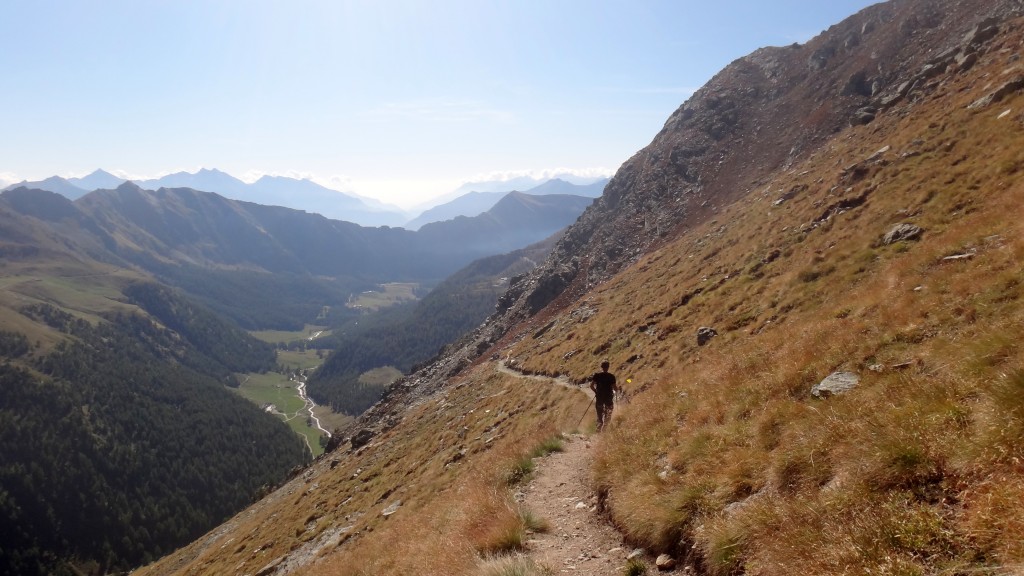 Carlo on the traverse just before we drop on sharp exposed switchbacks lower, the crux of this section. The traverse was easier than I remembered, though Carlo’s steady movement helped settle me into a concentrated trot, hiking poles firmly gripped. The trail was easy except for a section where we dropped a few hundred feet in very tight and steep switchbacks above sheer vertical drops – steep enough that we had to skid and slip a few times. Overall though my confidence was significantly improved over last year, maybe finally all this mountain stuff is paying off. The reward for the traverse was a number of passes with simply sublime views and another mountain shelter aid station nestled inbetween.
 Col Vessonaz - maybe the steepest descent of the whole race. I believe Steve injured himself here ...
The descent from col Vessonaz was extremely steep and Carlo and I skidded and glissaded down the extra steep scree field. Fortunately the scree was relatively fine so it didn’t feel dangerous, and we made excellent time. On the way down we met Karen, Dima’s girlfriend – she didn’t know exactly where Dima was and I was surprised he was behind me. “No idea where crankypants is” I told her which elicited a laugh. Carlo did not run any of the downhills but had a very fast walking pace, which kept me rather busy. One issue with fast walks though is that it can hurt your feet even more than running (or in different ways), and after about 3000 feet of dropping my feet were burning intensely in addition to my toes and various blisters screaming at me. All I could think of is to put my feet into the nearby creek and how incredibly good that would feel which made my pain all the worse, and I didn’t think it would have been a good idea (though I’m not so sure about that anymore). Suddenly Carlo stopped – he also had similar foot pain and needed some relief – a very welcome break right before I would have simply let him go on. His shoes were old worn down road sneakers and I was again amazed at how tough some people were. The final descent to Close was annoying since you kept dropping into a canyon long after you could see the level of the town, however it was by far not as bad as last year where my knee was killing me. To get to Close we had to climb a few hundred feet back up, and I was extremely glad that I could rest for a while. My feet were pretty beaten up and were even filmed and photographed by some people documenting the race. I also found my wonder medic from last year who fixed up a few of my bandages but was already off duty. Carlo was in much better shape and went on without me, while I decided to take it easy and linger for a bit, since the next climb to col Brison was rugged and very steep. The climb to the col involved more traversing and a crazy steep ascent, followed by a descent along an insanely steep mountainside. The year before I had done this in the night, and at the previous checkpoint people insisted I do not go alone (I also looked pretty bad then), and I sort of understand now why. I called Jill and she said she had just been at the col a little earlier and was going to wait at the rifugio halfway down the mountain. I was excited since we only planned on meeting in Ollomont, and happily I went down the 1900ft descent to that rifugio over the next 1.6 miles. My initial good mood however eroded quickly as my feet were in screaming pain and I kept getting more and more frustrated, every time I would hit my toe I started swearing and pounding my poles into the ground like a little child. Finally I saw the rifugio and found Jill and Martina there. Though happy to see them, I was steaming in anger. I messed with my feet yet again (if you’re bored reading the same old foot story by now you can probably imagine how tedious it was during the race …), barely ate anything, before Jill and I made our way to Ollomont along a very steep gravel road. This road was where I hit the low point last year – I had to walk backwards and screamed in anger, pain and frustration because of my knee. This year it was easier – unpleasant but by far not as bad, though I almost lost it when I finally got the the pavement to see that those perverted alpine villages kept the steepest sections within the villages. “How the f* can people get up here in the winter!” I exclaimed. I was very grateful for Jill being with me and I felt bad at the same time that she had to witness my temper tantrums, but she was very sweet and supportive, though I am sure she was as happy as me when we finally got to Ollomont around 10:20pm. Tappa 3 – Cogne to Donnas46km – ~4600ft up and ~8500ft down) – 11:26h (excluding stops at live bases, including sleep) I spent about 2 hours in Cogne, getting a good meal, enjoying Jill’s company (and a backrub, Jill is the most awesomest, my shoulders were hurting already) and starting to tape some hotspots at my feet. The rain in the first night had taken some toll, and I had some developing blisters under my toes already … Normally I just lube relatively generously with Hydropel and let things take their way and that works fine, particularly when wet, but by some rather twisted train of thoughts I figured that it might interfere with tape application later – so I only started applying Hydropel late, and then only sparingly. Why a supposedly grown man who has already found something that works comes up with such nonsense is unclear to me now. The next section looks to be by far the easiest on paper, fairly gradual and just a straightforward climb up and a looooooong descent down (which other race you know has an almost uninterrupted 8500 ft descent?). I left Cogne at about 4:30pm – about 1:10 earlier than last year – so much of this section happened at night. Since I had little problems with sleepiness the first night I figured I might reach my (soft) goal of 200km before sleeping at all. Honestly I don’t remember all that much though I believe tiredness hit me unexpectedly hard and after a lot of pondering I came to the conclusion that an hour of sleep in this night would be advantageous – last year I tried to sleep in the day at Donnas which was mostly a waste of time. I probably slept for an hour at a refugio with no issues (all my refugio sleeps were blissfully perfect – lie down, set alarm, get woken up by alarm). What I do remember though that while last year the tiredness was severe, it also carried a significant fun factor – I had weird conversations with myself, thought I was my dad and talked to me, thought I was in California on the Ohlone course (which, to be honest, doesn’t look even remotely like the terrain we were in). This year, it seemed comparatively bland and just sort of bogged me down – all the unpleasantness and none of the fun. I reached the pass in the night and started my descent, which, not surprisingly, went on endlessly. The terrain was not terribly technical at first though I remembered some unpleasant stuff later on from last year, though it had been raining in 2010 which made things a lot different. Last year, I met Daniel Probst on the downhill and we both had some epic struggle with tiredness – I even hallucinated a japanese team of fishermen lowering a fishing boat to the – well – mountain road. Go figure. This year I did hook up with another runner who did not really speak english but had a failing light due to some missing batteries, so we ran together until we hit some easier terrain. With increasingly painful feet I also found out a somewhat unexpected aspect of the repeat performance – the higher sections of the downhill seemed significantly shorter than I remembered, only to realize later on that I totally forgot about some very long remaining stretches. The downhill was very misleading with the trail weaving in and out of towns, one would come out on a road, through a town and then basically through someone’s yard back onto more trail and more descent, and so on. I think I also mistook the Chardonnay aid station for the Pontbotset one, which sadly was another 10km and 2200 feet of descending, needless to say that didn’t help my mood. Finally I hit the same road I remember walking down with Daniel at the bottom of which we met my dad last year. I had told Jill not to come because I would hit the live base in the early morning, so I did not have that to look forward to. The chatter with my dad also had wiped the fact that once at the bottom we had to cross numerous towns that were not Donnas until we finally walked over an ancient roman road (seriously how could romans walk on that stuff. It’s worse than a bad trail!) into Donnas and reached the base! On the positive side though I reached donnas almost 2 hours earlier than the previous year, though with feet that were in significantly worse shape! At the aid station I found Stevie Haston, the crazy, famous and funny british pro climber I spent almost a whole tappa with last year. He had given me some good advice regarding Jill back then (aka to ask her out) but he unfortunately had dropped this year due to some leg issues. He had gone out with a 95 hour time goal – that’s about 35 hours less than last year (“I trained a whole year for this” he told me) and had injured himself, but he had no remorse. It’s always inspiring and humbling to see how real top-level athletes work, and what they are capable of (even if he injured himself here he had gone out with impressive speed). I even met his awesome wife who applied some of her extreme strength sunscreen to my crisply burnt arms (the previous day had been very sunny and hot, and I was quite sunburnt to a level that worried me – I felt sort of feverish) and I took my time chatting with Stevie before I had the medics apply a lot of tape to my feet. I had developed some bisters on my heels and various blisters under my toes and even on top, and my metatarsals were painfully tender. Then Stevie told me to get the hell out while it was still early to avoid the heat, and eventually I left. Tappa 4 – Donnas to Gressoney53km – ~15100ft climbing – 24 hours excluding stops at either live base
I left Donnas through town and soon veered off through vineyards toward the first climb, which felt strange because in my memory I remembered the next climb as the first. This first section was steep but not too bad, rolling and traversing until we descended again to the first aid station. I struck up some conversations with two fellow TDG finishers from last year – one of them had finished in 9th position under 100 hours – he told me he felt very weak and off since the first aid station. However, he was motoring on despite being far off, without complaints – I was deeply impressed. He was a really sympathetic guy as well. He later came back and finished in 53rd position in 116 hours … Anyways, the only real challenge about this section was the increasing heat, though last year I did this close to noon where it was much hotter. The real fun started after Perloz. I was on the increasingly steep long ascent I remembered doing with Daniel last year, when we pondered how much tougher alpine folks were than us. The ascent was partially on connecting trails and old roads between villages and in parts was ridiculously steep for that purpose. The whole climb was 5400ft net over ~6 miles with increasing steepness – that could make anyone a little tired. Increasingly I realized why this was hard, as the terrain was more dominated by talus fields higher up (by talus I mean boulder fields with rock sizes ranging from babyheads to man-sized rocks and beyond), making the slow going even slower, and my feet started hurting a lot from the added friction of odd-angled rock surfaces. I was, however, looking forward to an espresso at the rifugio Coda and the amazing view of the plains since from there one could see out of the mountain range into the lowlands on one side, and into the mountain valley on the other – one of the most spectacular views I’ve ever seen. Sadly, this time some fog coming in from the lowlands prevented my photo documenting this. I enjoyed my espresso and some italian orange soda at the Rifugio and made my way to Lago Vargno. Interestingly, I was not able to pay for anything but the sodas at any of the rifugios – espresso and even ice cream was free. I took a long time fixing my very hurty feet, especially since a downhill section was ahead. The section to Lago Vargno is not really very clear in my mind anymore, a long downhill and rolling stuff, it sure was pretty and it was slowish going and my blisters hurt. At this point in the race at the very latest one realizes that those tiny bumps in the elevation profile are all still big climbs that are strenuous to say the least. The reason I don’t have any pictures of Lago Vargno is that it’s probably the single least pretty place on the course. It’s basically a dam with an artificial lake and a bunch of construction equipment. It looks more like a bit of a quarry than anything, and it’s not really terribly inviting. Last year I fittingly reached it in the dark and fog, which gave the place a really creepy quality … this year it was still light though, so I knew I was quite a bit ahead of schedule – always nice. At the aid station I tried some very funky sesame sticks that I had avoided until now, which turned out to be quite good – but not much else could tickle my fancy. The aid station food was a bit more sparse than last year and very uniform – except for a few stations where the locals added some of their specialties to the menu – often incredibly tasty treats! 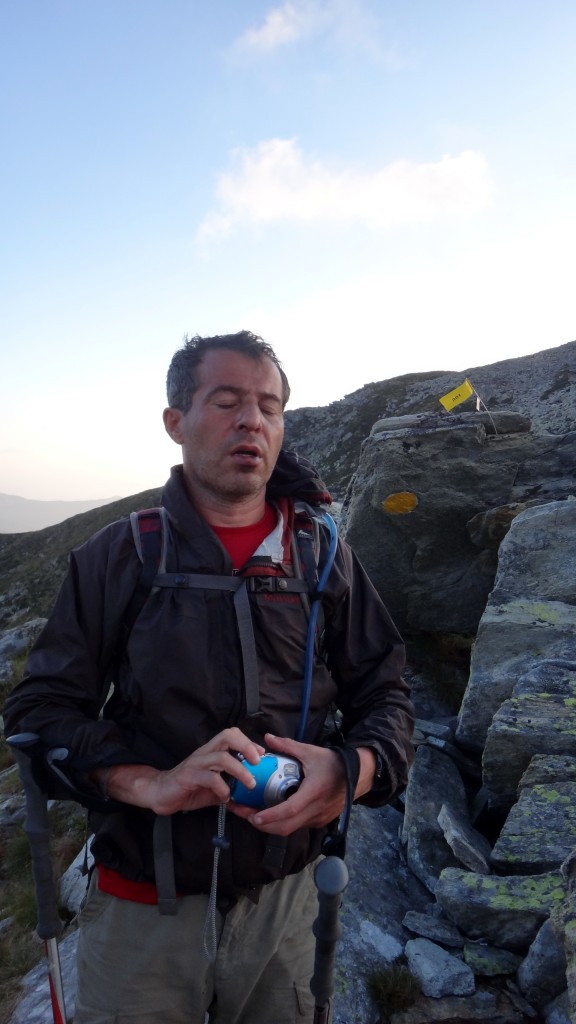 Dima "Crankypants" Feinhaus. To be fair, with a busted nose, arm and lip I would probably be "whinypants", so he did pretty awesome ... On the way up to col Marmontana, just around sunset, I came across a guy – Dima as it would turn out – sleeping face down at the side of the trail. “Are you ok?” I asked – had learned earlier that it’s better to ask in english than in french, since while I could ask I couldn’t usually understand the answer, which made the gesture sort of awkward – at least this way they would try to reply in english if they could. To my surprise, I got an english answer – “yeah”. However, Dima started shivering uncontrollably and looked really terrible, with blueish lips. “Do you want to join me?” I asked – “yes!”. I waited while he got ready and we took off to get him warmed up. I was somewhat worried at first, but he came back. It turned out Dima had in the first night walked off the trail in a talus field and took a tumble that could easily have caused broken bones or worse – but miraculously he “only” got a busted nose (not broken though), bloody lip and a bruise on his arm. It immediately made my romantic “no-sleep haha tumble around” strategy look very unwise, and it reinforced my less exciting strategy to sleep when I was tired instead of trying to hold out as long as possible. On the way up to the col we became friends which is really unavoidable in that situation and we had long discussions about topics ranging from politics to religion to relationships to why those goddamn rocks hurt so much and really another talus field? One passing competitor even admired our energy to discuss so loudly while climbing up to the col, though he might have been just polite and really meant to indicate we should be a bit more quiet. As it turned out Dima and I had many similar views, which was good because I didn’t feel like I would have had enough energy to push him off the mountain otherwise. The other side of the col was where the real fun started. The whole section was extremely technical boulder fields and though relatively short, I doubt we made even a mile an hour progress at night. Two aid stations that were merely flown-in hard shelters provided some welcome refreshment, though it was difficult to get back out into the frustratingly slow and rather painful debris fields. I felt quite low until we hit the last col before the descent to Niel, where we would sleep a little. I had, however, totally forgotten just how awful that descent was – it was very technical crappy rock steps and mud and grass, very slippery due to the dew. I got increasingly frustrated as we descended, towards lights that were not our destination, then traversed endlessly though dark woods on terrain that was relentlessly unpleasant, short steep ups and downs, rolling sections. My feet were burning and everytime I hit a rock, stumbled or my poles got caught I started to curse until I finally lost it and just loudly yelled obscenities. Dima had fallen a little behind I think, but I cared little if he heard it, though I was somewhat embarrassed when I passed a person a little while later – I assumed she had come to look if anyone was in trouble. Fortunately (or maybe not) it turned out to be Dima’s girlfriend, and we were close to Niel. We stopped at Niel for some sleep – I got a wonderful hour, while Dima seemed to be struck with bad luck that followed him througout the race – he was consistently interrupted by an irate french woman claiming they were sleeping in her room, despite the aid station personell telling her to just wait for a while. Anyways, feet were fixed, food was eaten plentifully – but in reality, we still has 20km left in this section. I now remembered exactly why, when I filmed myself last year, I said “Gressoney. Man, I thought I’d never get here.”. I thought exactly that. The remaining 20km still took me between 5 and 6 hours. I left with Dima who, after a short while, decided he needed another little trailside nap and I moved on alone. The climb to the pass was uneventful though in addition to my busted feet I had developed a serious case of constipation and while I constantly felt like I should go, I just couldn’t – I hadn’t been able to for the whole race (which is ironic because I used to tend to the opposite). I made a honest effort on col Lasoney, the last pass in this section (if you try, at least do it in a beautiful high setting) but to no avail! I started to feel sort of low-grade ill and stuffed. The descent from the pass was initially very pleasant and runnable through grassy fields and gradual though I faceplanted after getting caught in a hole in the increasingly technical grass field which was laced with holes and babyheads – that seriously dampened my mood again. Cursing and more careful I descended ways past little farmhouses and an aid station stop at Ober Loo (where last year I was almost forced to drink some red wine) until I met Jill on the trail. Then we finally got to Gressoney. Man, I thought I’d never get there. The Tor is certainly amongst the very hardest of footraces in the world – a 330 km, 24km elevation gain (yes that’s more than a half marathon vertical up, or 80000ft for the metrically challenged), 25 passes above 2000m, non-stop (though you can sleep at many aid stations) stint through the beautiful Italian Alps around the Aosta valley. It is epic and superlative in all ways – the organization makes any US race seem quaint (not to say that American volunteers are any less fantastic) – it’s hard to compete with 1400 volunteers and a cost of north of 300k euros … In fact, it’s so superlative I couldn’t put together a race report for my first running of this race – though the slight distraction of meeting Jill might have had something to do with it as well :). So this is a bit of a double report, heavy on pictures and hopefully not just the “it went uuuuuuuup, then it went doooooooooooown endlessly” which this report easily could degenerate into … Both of the years running I went into the race somewhat injured – this time with some nagging achilles issues and, more worrysome, persistent and occasional pain under, on the side of and on the top of my left big toe – the same that made me DNF TRT pre-emptively so I could run TOE, where it bothered me for the first 50 miles but never enough for me to stop. The interesting thing about a race of this magnitude is though that it’s so long, and you go so slow, that often the issues you encounter are very different from your usual running injuries. At least that’s what I told myself to calm my mind … The race itself is split into 7 major “tappe”, though they are not stages as the clock keeps ticking – instead at the end of each tappa is a large aid station (“live base”) with lots of space to sleep (generally field beds in a gym hall or tent) and a warm meal. My strategy for this year, as for last, was to sleep as little as possible, only when absolutely needed. This was not intended for speed – though the winners usually only sleep 2 hours or so, I think for my skill level more sleep would be beneficial – but for maximum experience and immersion into the environment. Last year I learned in addition that the live bases were not good places to sleep – generally crowded and with tons of people coming and going – instead I planned on sleeping on one of the many refugios, which allow only for 2 hours of sleep at the max (I was planning on 1 hour increments anyways) and are usually quiet. The only downside is the refugios are usually at moderately high altitude (which does not provide for as much rest for t Tappa 1 – Courmayeur to Valgrisenche49km – ~13000ft climbing – 11:43 The start was even more crowded than last year – of course, with 500 as opposed to 350 runners. I was happy Jill was there to send me off, and also that they did not play any AC/DC this year (“She shook me all night long” was playing in my head for 132 hours last year, and it got old after about 5 minutes …) – though a heavy dose of Katy Perry at the Guide’s Cafe (which happened to be the only place in town with free internet) had already set my musical background for the days to come … ugh. There were a lot of familiar faces, some competitiors from last year – we all had our finishing rank as our start number, and all numbers below 200 were reserved for one of the 75 finishers from the previous year that was crazy enough to come back – even the guy I walked into the finish with last year (Carlo Favre, a kind of a local legend and a true mountain man – who can easily hike circles around me …). Despite the distance and the terrain, once the start signal came, we were off running – it’s hard to escape the energy of the field and resist the hundreds of cheering spectators with cowbells who are cheering us on. The first col is Col Arp – easing us into the race with a moderate 4300ft climb that starts out gradual and gets only really steep at the end (though gradual here is still around a 750ft/mile grade). After a while I lost Harry and Steve who went out very conservatively (smart), passed Angela Pierotti from last year (she would post some impressive improvement this year) and caught up with Anne VerHoef. Anne is a super-strong hiker, though the elevation caused her problems. She would later unfortunately drop out due to a flare-up of plantar fasciitis in Gressoney. During the descent to La Thuile I took it easy and though my foot kept aching a little otherwise things behaved well – phew. The next climb was along a gorgeous valley along an incredible waterfall – the first time where I started to feel bad last year on behalf of going out too quickly, which I avoided this year. The climb lead to an incredible second high valley with breathtaking scenery. I caught back up to Anne who had left before me from the previous aid station (I tend to be slow filling up) – usually she would catch up or pass me on the downs while I had more gas in the tank on the climbs. Passo Alto was the second col, and the first with a significantly steep descent – losing 2900 feet of elevation in less than 3 miles … just to go back and gain it all back on Col Crosatie. That col had a wickedly steep ascent though scree fields and later on though a path carved into granite, wild and alpine. Lots of steps and some ropes got us into the right mood for the adventure to come – though it has to be said in all but maybe snow conditions you wouldn’t really need the ropes. They protected against some real exposure, though the trail itself is generally very good – much better than in the TOE, where such passages would have been unprotected on much worse trails. On the 4400ft descent into the first live base I caught up with Doone Watson and her husband Tim – Doone was determined this time to finish (as she would). To my delight, Jill was waiting for me at Valgrisenche, which I reached a bit past dark with Anne at 9:43pm – a whopping 11:43 hours for less than a 50k! Valgrisenche was a somewhat cramped affair this year due to the high volume of runners, and no crew was allowed within the checkpoint. At this point I was about 15 minutes behind my 2010 pace. Anne decided to sleep at this aid station but I was determined to push on after changing clothes and some pasta. I decided to go somewhat light after my experiences in TOE where wearing anything too heavy on the uphills would only lead to being drenched in sweat and freezing cold on the downs. Instead I would rely on gloves, mittens and hat for warmth if needed. Still, I had my puffy with me in case I had to stop moving anyways. Tappa 2 – Valgrisenche to Cogne54km – ~13700ft climbing – 16:30 (excluding stopped time at either live base) The next stage was significant – it had the first scary downhill from Col Fenetre and three major passes – two above 3000m – including the highest one in the race, Col Loson, standing 10824ft tall. After a nice gradual climb of another 4000ft (it seems as if there are only 3000+ feet climbs in this race which is of course not the case – you just tend to not notice anything less than 1000 feet at all any more …) I reached Col Fenetre in the night with the same spectacular sight I remembered – the line of lights down the col made it seem like the descent was almost vertical, as if one was to look from an airplane down. The trail was good but very steep with very sharp switchbacks, some of which were above near-vertical talus fields – I was only glad it wasn’t wet! While I marched down the pass I wondered how I did this without using my poles last year and I also if I was the biggest chicken in the race with my aversion to heights – I doubted many people would consider this descent to be of any difficulty at all (except for the fact it was very steep of course). The thing was made harder by the fact that this whole fun section wasn’t just a few hundred feet of elevation high … you loose almost 3000 feet this way. Needless to say, the I reached the next aid station with some relief. Shortly after this aid station I continued my climb up to our first 3000m pass, col Entrelor. I don’t recall really much of this ascent except it was very steep, and that I met the only Scottish competitor, Gary Morrison. He was having some issues with the altitude but was otherwise in generally good spirits (from the results I learned he later timed out just before the last pass). Definitely a sufficiently studly man being a deep sea diving instructor having done lots of diving in the arctic (brrr), I was rather pleased to learn that he too had some mental difficulties with the descent from col Fenetre with much the same thoughts as me (visions of contorted limbs over big boulders) … and he even used to be a bit of a climber! Feeling fully vindicated and invigorated after a good chat, I strongly pushed on. As my breathing got shallower and more rapid I remembered Harry mentioning resistance exhaling as a technique to stave off altitude sickness by increasing oxygen uptake and tried that out – and that worked wonders. My breathing rate dropped by half, and I felt much stronger and charged up the increasingly steep pass. I don’t remember much of the descent … it was fairly gradual but looong losing 4400ft in elevation. I reached Eaux Rousses almost one hour faster than last year, just at 7:30am. I was glad to get an early start to the climb up to Col Loson, a 5400ft net elevation gain climb – gradual except for a fairly brutal finish. This section is one of my favorite in terms of sheer beauty – a wild alpine river in a remote high valley with gorgeous views of snow-covered massifs. I reveled in the beauty of it all and was sad that Jill couldn’t see this, as I made my way up to the col. With judicious application of the “P-ffffffff, P-ffffffff” technique I made it surprisingly easily up to the col (last year I almost keeled over and had to stop to catch my breath a lot). The other side was just as spectacular, and I started the descent along some exposed roped sections to the emergency biouvac located just about hundred feet below the col where to my delight the aid station folks had Cola, still and sparkling water and even beer waiting. I opted for a beer – a nice refreshing beverage after a day’s worth of coke – though I got handed the whole can instead of half as I wanted. I couldn’t really dare to waste half a beer that was somehow transported this far up in the mountains and thus drank the whole beer. Somehow relaxed and a little intoxicated I continued the descent (that reminded me a bit of the counter-clockwise descent from Grant Swamp Pass in Hardrock, just a lot longer and higher …) which was mostly easy despite having some very steep almost butt-slide sections through relatively fine and moderately harmless looking scree. I made good time and was able to run a fair bit. The descent followed another alpine river through a wonderful narrow valley until, to my delight, Jill came towards me. She had planned to hike to the col and was surprised to see me this early. She wanted to accompany me to Cogne, the second live base, and I felt a pang of guilt at denying her the beautiful experience of Col Loson, though I was thankful for the company. Further down we met Martina as well. I chatted merrily and probably fairly incoherently as we made our long way down to Cogne which included a fairly long road section through town. Le Defi de l’Oisans – the Oisans Challenge (also Tour de l’Oisans et des Ecrins, TOE). Usually it’s a six day stage race, but for its 20th anniversary it would be held non-stop. 180km, 12000m climbing (that’s 40k feet), 80 hour time limit. It was basically the GR54 hiking path, a well known challenging european hike that is usually done over 9 days. I signed up for this race sometime last year, when Chris sent me a link and I had not yet been planning to return to TDG. However, once I signed up for TDG again, I forgot all about it, since it seemed excessive to go to Europe to race twice in a year. Instead, I signed up for TRT … Until Chris sent me this picture (well not this picture, since I took it): Closeup of Col de la Muzelle from Col Cote de Belle. The black shale cone alone is about 1500 feet high He knew exactly which buttons to push … “The road book (aka course description) sounds like it’s going to be really tough and scary. It’s a one-time only thing, and you’ll kick yourself if you miss it.”. I was hooked – however, I’d have happily forgone it, if my boss had told me to stay put. “Sure, go for it”. Damn Google, it’s just too sweet a place to work for … and Jill was supportive, of course. Even Harry, who usually voices reason, thought it’d be my style. Really, I didn’t have a choice … I sent in my medical certificate about 3 months too late – the RD said “see you soon”, got some last minute tickets and everything was set up. Sometimes I really miss the days of tough love, since then I could have pouted on the couch instead of having to crawl up mountains. Anyways, I still planned on starting at TRT (which was 10 days before TOE), but with the promise to myself to quit at the first sight of trouble. This is exactly what I ended up doing – after 50 miles, my foot was in bad shape. My left big toe joint was a mess – it hurt underneath, on the side (very badly), and, because I changed the lacing, my arch was very painful as well (something I also had before and knew to give me lots of trouble for a few weeks once I had the problem). I’ve had some of these issues to a lesser extent at San Diego, and was distraught that it still had not subsided. Since TOE was my A race I called TRT quits, but not without worrying I might just have messed up both races … The following week I tried my best to pamper my foot, though I kept feeling the pain. I did not run once, and went to France with low hopes of a smooth race and even fear of not finishing. I felt that finally my luck in racing might have run out.
 When I saw this, it finally hit me I was not in the US anymore. Only the French could make you feel thirst and pity at the same time. I think this is Danni's favorite place in the world, she just doesn't know it yet. I flew to Geneva the following Sunday, with the plan to work two days from Les Deux Alpes and then race from Wednesday to whenever I would finish or drop. Les Deux Alpes is mostly a ski-town, way touristy, not terrible but not nearly as charming as a real alpine town. Two days passed uneventfully … everything looked f*ing steep, and people spoke mostly only french. Pretty much what I expected. The race started at a civil 8am, just half a mile from my hotel. I made my way there with Chris, and we pondered the cloud-shrouded mountains around us. The weather forecasts varied wildly, but we certainly expected some rain in the morning. At the race start we found ourselves with 241 other runners, more than I had expected. The start was fairly unceremonious and, even better, they didn’t really care too much about the time. By 8:07am the start was decared, and we were on our way. It was the first time I ran in 10 days. 1. Les Deux Alpes to Vallouise (km 83) Chris turned out to have a similar speed to myself, and we formed a team together with a german runner, Uwe. After about 25 miles, my foot finally started to act up, and my arch started to hurt. A lot of my race I spent obsessing about what I felt and where I felt it, if it got better or worse, and my initial optimism eroded to the realization that this could get pretty bad. I slowed down very considerably on what were perfectly runnable downhills and was in a generally low mood. I started to make plans to skip TDG and hike with Jill instead of running, and you know, had the usual whiny thoughts you might have. At mile 50, my foot was back to being rather tender. I had to loosen the laces a lot to keep my arch from hurting, which is not a particularly good choice for stability – something that kept crossing my mind … Even despite the moderate terrain the first 83k had taken us 18 hours (including a one hour stop at a previous large aid station but exluding a one hour stop here) – still we did better than we expected. 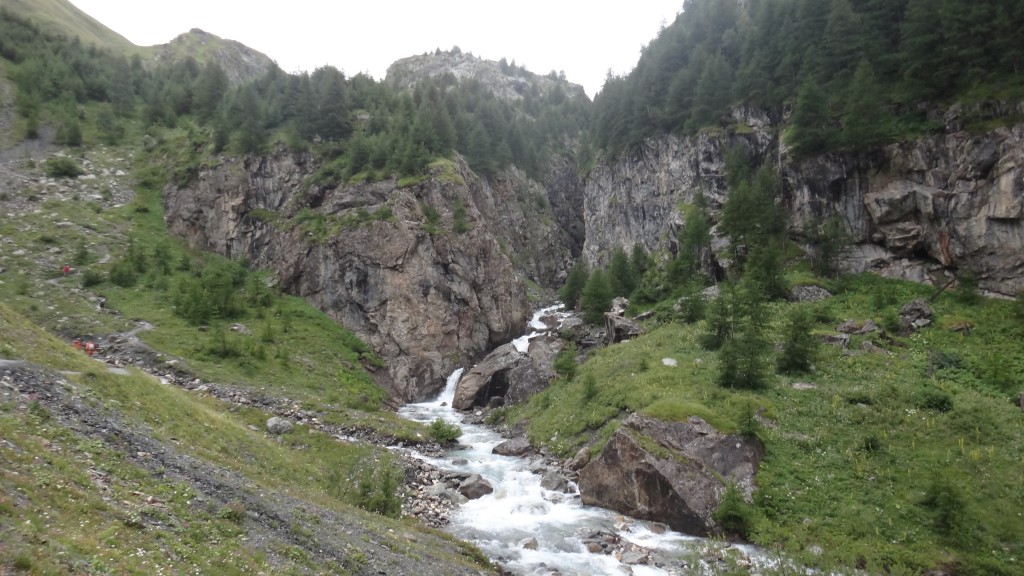 The course got progressively more scenic. The number of streams and waterfalls we passed made me sad it wasn't hot. 2. Vallouise to la Chappele (km 133) We left Vallouise at 3am with dawn to come around 5:30am and started our ascent to the highest pass in the race (about 9000 feet high) – Col de L’Aup Martin. The 5400 foot climb started out pretty gradual, following a river into a long valley, where we were greeted with an incredible alpine sunrise. It was amazing to start seeing the majestic mountains all around us, emerging from the darkness in a much more remote and wild area. The trail started to become a bit more exposed and technical in sections, crossing some boulder fields. Finally we saw the pass, and arrived at the first shale fields, which were described as the major technicalities – on account of being steep and potentially slippery – of these sections. Although the morning was clear and beautiful, everything was still fairly wet, but to my surprise the shale paths proved to have good traction. The first field gave me some chills, despite it being only moderately steep and just a few hundred feet high. Still, I remember from my childhood where my father would warn me about seemingly easy terrain, where people often overestimate one’s ability to self-arrest. While the footing made slippage unlikely even in some sketchy passages in the trail, I did not agree with Chris that a tumble would be harmless. Usually the shale fields also end either in rocky scree or a cliff, neither of which providing a soft landing. In this part of the alps, the fields often do not taper off, but instead become steeper and sheer towards the bottom, making them much more intimidating than for example Hardrock’s Grant Swamp Pass (also the fields have off-trail not much traction as opposed to Grant Swamp). Another thing about being in any technical terrain is that one has to learn exactly what the conditions will be – what is slippery, loose, how much traction each kind of rock has in dry or wet conditions. While the crumbled shale paths, for example, provide excellent traction, the occasional shale plate proved to have quite the opposite – ice-like slipperiness. Granite is usually good, though we encountered patches of mud of various consistency – from sticky clay to slippery. All in all, if you are in such terrain for the first time, you have to be very careful. People do die in the Alps every year from simple stumbles on exposed trails. Of course a lot of my fellow runners saw this as a very easy trail as they grew up hiking and climbing in the Alps … adding more insult to my own discomfort. I tried to not be bothered by the increasing exposure as we entered the steeper and steeper shale field towards the top of the pass, and jammed my poles firmly into the trail. Occasionally we would pass over rock cliffs, not my favourite since poles are of much less use on rock – in reality I would say they can be outright dangerous, since they can slip quite easily, letting you lose balance. As opposed to most races in the US that have occasional exposure, here the trail stayed exposed for basically the whole ascent, with many sketchy passages where the trail had eroded. All of the sudden it dawned on me that indeed the race had just started … I was glad to finally reach the pass, though apprehensive of the descent. The initial downhill was an increasingly steep cone of shale which we traversed on a consistently very steep downhill. After the shale we entered rock fields and various terrain, mostly with enough exposure to keep me well frightened. The one upside to all of this was that I focused so exclusively on the trail that I totally forgot about my foot – and it had stopped hurting! This was pretty much what I joked about before the race … quite amazing to see that it works. The clear lesson here is that if you are injured, you should seek the most frightening and demanding race you can find to take your mind off it! Another deep insight by Beat, counter-intuitive but so true! After about 3500 ft of steep descent I did feel my foot again, but it was not as bad as I feared – leading to increasing optimism for my foot, along with growing worry about not having written a will before coming here. After some refreshments, we made our way back to the remaining three passes in this section. They proved to be just as unnerving with lots of traverses on narrow trails, extremely steep shale fields and a final monstrous 5200 foot descent above cliffs and other scary stuff. Many times it was unclear to me just how exactly we would get down some of the crazy mountain sides, and the path would traverse very exposed rock faces. Again – this went on almost without relief …During this downhill Chris got me especially paranoid since he reminded me that the next section would be the technical crux of the race, a traverse along a mountainside where we would have to cross some slippery rivers with very high exposure. I was getting extremely tense, as already this secion was outside my comfort zone – and unless we would sleep for 8 hours in La Chapelle, we would have to do the next section at night – though at least it might mean the exposure would look less frightening (note: that’s bullshit). 3. La Chapelle to Valsenestre
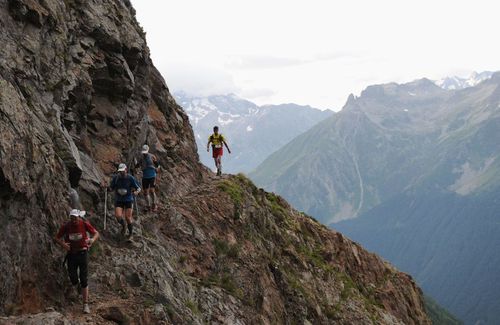 The easier of the two sections ... scary as hell in the night when wet (photo from a different year).  Same section in the direction of travel. The trail has a fault, and crossing the stream requires jumping or climbing across. Finally we heard rushing, and the first of two main obstacles came into sight. The trail started to become a ledge in a rock face that became progressively narrower and less well built, with unsure footing and no safe purchase for the poles. After a short section we could see the narrow ravine the stream had carved into the rock. Before that the trail was rather faulty, causing some very slow crossing, my heart beating rapidly. The drop from the stream crossing itself would only have been a dozen yards as there was another rock ledge just below (however it did not extend far either), though it would have been a hard fall. To cross the stream we would have to jump over it since there was no solid footing in the stream bed or climb up a few yards and scramble down the rock side on the other side. I decided that was the better approach since there seemed to be some handholds, and due to the fog and stream the rock was wet – while it seemed to have reasonable traction, I just didn’t want to take a jump onto a narrow landing spot with unsure footing. I was able to do the little maneuver without too much difficulty as the handholds were solid, and Chris followed. I was now in the lead and despire being terrified of what might come, I felt I just wanted to get this over with quickly. Some other runners overtook us – the local europeans were much more used to this sort of stuff. I could not believe some even did this with Hokas, which have atrocious traction in some conditions …
The climb to Col Cote de Belle was one of the steepest sustained climbs I have done … but I liked it and set a nice even pace up the pass. Initially a few runners overtook us, though later on we caught them again and ended up ahead. The uphill was easy but muddy – the downhill more exposed than I thought, with some muddy sections above some steep cliffs. We later entered a section with thick lush vegetation that surprisinlgy looked like HURT – especially in thick fog – and saw some people had wiped out into the plants. That was rather bold given thevegetation can be too thin to hold you and can simply obscure the view of a cliff … The downhill seemed to go on forever, and although there were runnable sections I refrained from running as to not aggravate my foot.
Exhausted we reached the last big checkpoint, having been even a bit faster than we initially thought. My foot had been holding up well – while the toe joint was tender, it did still feel possible to walk and even run, and the arch of my foot seemed also properly under control – even though I had tightened my shoes for the technical sections. I had from the beginning added a neoprene insert above my arch for extra padding, which had worked quite well. 4. Valsenestre to Finish  The col from below. If it wasn't for the new trail, his would have indeed been a formidable challenge. We were left with a descent of 5700 feet and another 2100 feet of climbing. The initial descent was steep but very doable and had even some fun glissading on a snowfield to reach the Refuge de Muzelle. After getting some sodas we took the steep but very well maintained path down to Venosc. Though still exposed, the path was of unusually high quality due to some significant traffic to the refuge. We descended again a long canyon with a raging stream and countless waterfalls, though my feet started to burn enough I could barely enjoy it. The descent finished on a punishing boulder road which was not only brutally steep but also unusually slippery and painful to our feet … as usual, when you get close to the bottom, it gets worse here rather than easier … After Venosc we climbed 2100 feet in about 1.5 miles to reach Les Deux Alpes. Finally my finishing fire kicked in and I overtook numerous runners on the very steep but easy ascent along a hiking trail beneath some skilifts which were heavily used by downhill mountainbikers, seemlingly the summer activity to do here. While I briefly cursed skiers (and bikers), the knowledge I would finish gave me intense energy, and the climb felt in a way effortless. At the top I waited briefly for Chris, then we made the final 1.5 miles to the finish through town and ended in a sprint (partially to avoid being overtaken by some runners close behind). We had done it, in 59:00:01 – though I swear it was under 59 hours according to my watch 🙂 San Diego 100 is a great race. It looks easy on paper, but the combination of a super-fast beginning, technical trails, heat and cold make for a surprisingly difficult race. The climbing is – according to my altimeter – only about 12500ft, which seems about right (there’s only one noticeable climb really), but it takes a good runner to keep running those gradual rocky trails later in the race – and a good runner I am certainly not. Still I had a ton of fun, spent some awesome time with Jill in an incredibly varied and beautiful terrain and finished in 27:18. Really though this race is all about the views, so instead of a detailed report, you get some pictures. I just got back with Jill from Wendell’s Berry Creek Falls 50k – a small event in Big Basin, small mostly because there are 3 races in the Bay Area alone this weekend (Quicksilver 50K/50M taking the lion share of runners as an old, fun, but very fireroadish event and Diablo Marathon/60k tomorrow) – and a Big Sur marathon not too far away as well. Oh living in the Bay Area can be hard sometimes … The Diablo races are extremely steep (the Marathon makes most 50 milers blush with 7900ft of climbing alone, the 60k makes you cry with 11000ft of gain …) and while usually my conclusion would have been to run both Berry Creek and the 60k, it seems a little ill-advised recovering from my Achilles injury right now. So the “easier” Big Basin run (with “only” ~7000ft of climbing) was my test to see how well my recovery was going. The course offered many opportunities to drop, which was another plus of this choice – that and Big Basin is one of my favorite areas. The race itself was tough. I woke up with a sore throat, which still remains now, and hadn’t run really any distance in the last 4 weeks (or at all the last 2). I also took the downhills and uphills deliberately slowly as to not aggravate my Achilles. Soon though the deliberate slowness became simple my race pace – I had been queasy from the start and I ate very little. Jill and I ended up with a record 7:50 finish – the slowest 50k I’ve done ever, I checked. I would have deserved to be last, though one person came in after us. However, I did not mind at all being out there for so long – because I had no problems whatsoever with the Achilles – laying to rest some significant anxiety about the injury, which had previously seemed pain-free, just to flare up very nastily with a little longer activity! Of course careful monitoring, continued treatment and slow ramp-up (I know this sounds a bit ironic …) is still in order, but that’s a big relief and in line with the results from my MRI (which I just got yesterday), which showed only mild tendionosis (tendon degeneration – expected given my running history anyways), no tearing, but a hematoma and some bursitis – compatible with soft tissue damage on the damn Wickersham Wall at White Mountains. All in all, I enjoyed every minute I was out on this gorgeous course on a perfect day with temperatures that were just right in one of the most beautiful places the Bay Area has to offer (and, which I think, can certainly hold its own in the world). Jills decision to stick with me made the run all the more joyful – a great day indeed. This time around I took my camera and shot some pictures myself, so I don’t have to steal them from Jill. Somehow all my shots of the big waterfall didn’t come out, but you can see it on Jill’s post. |
